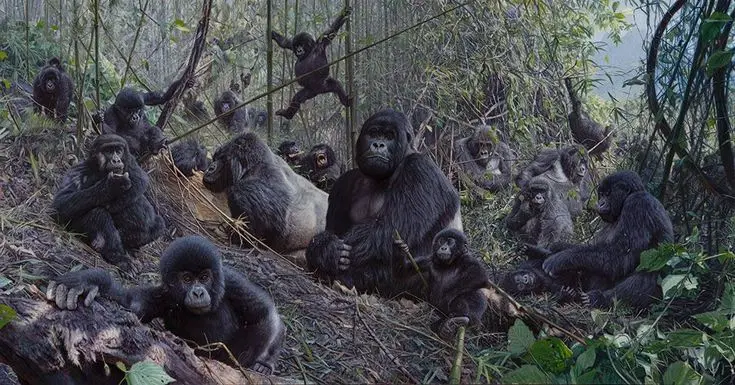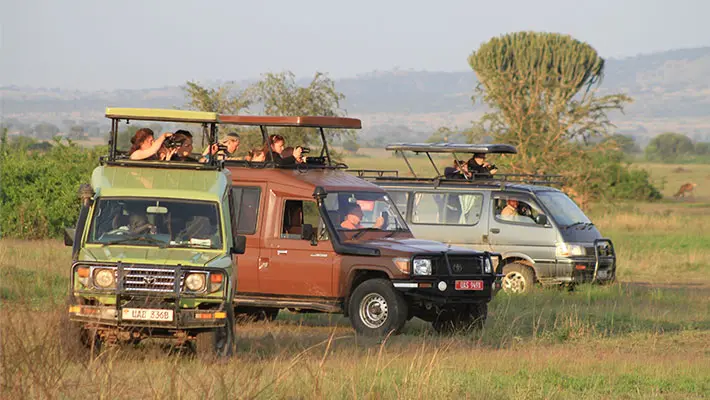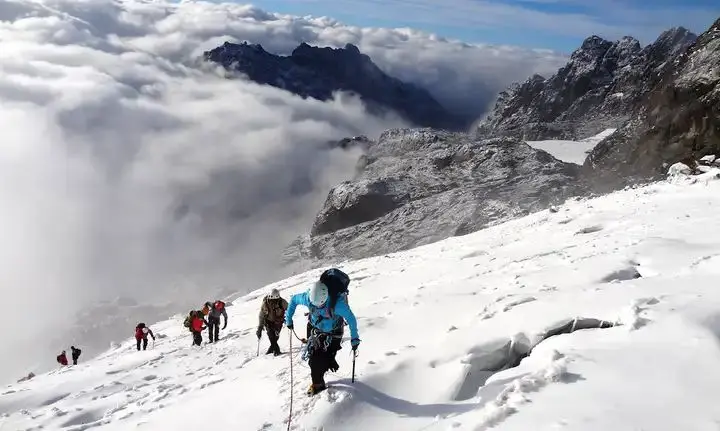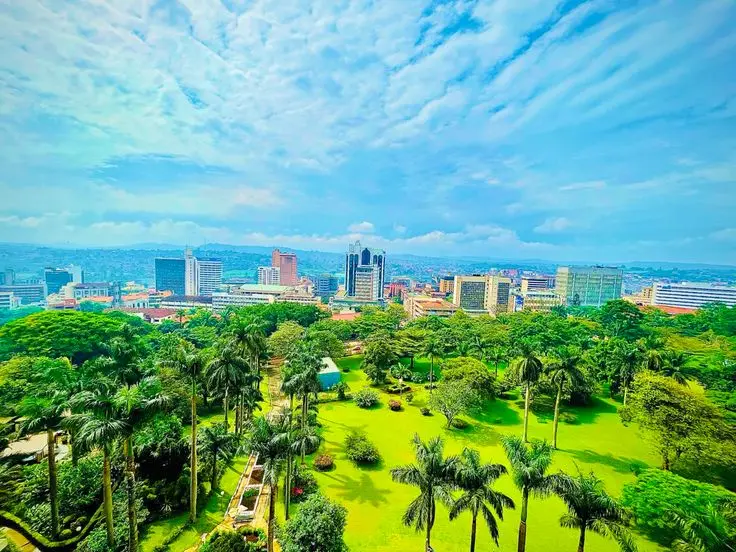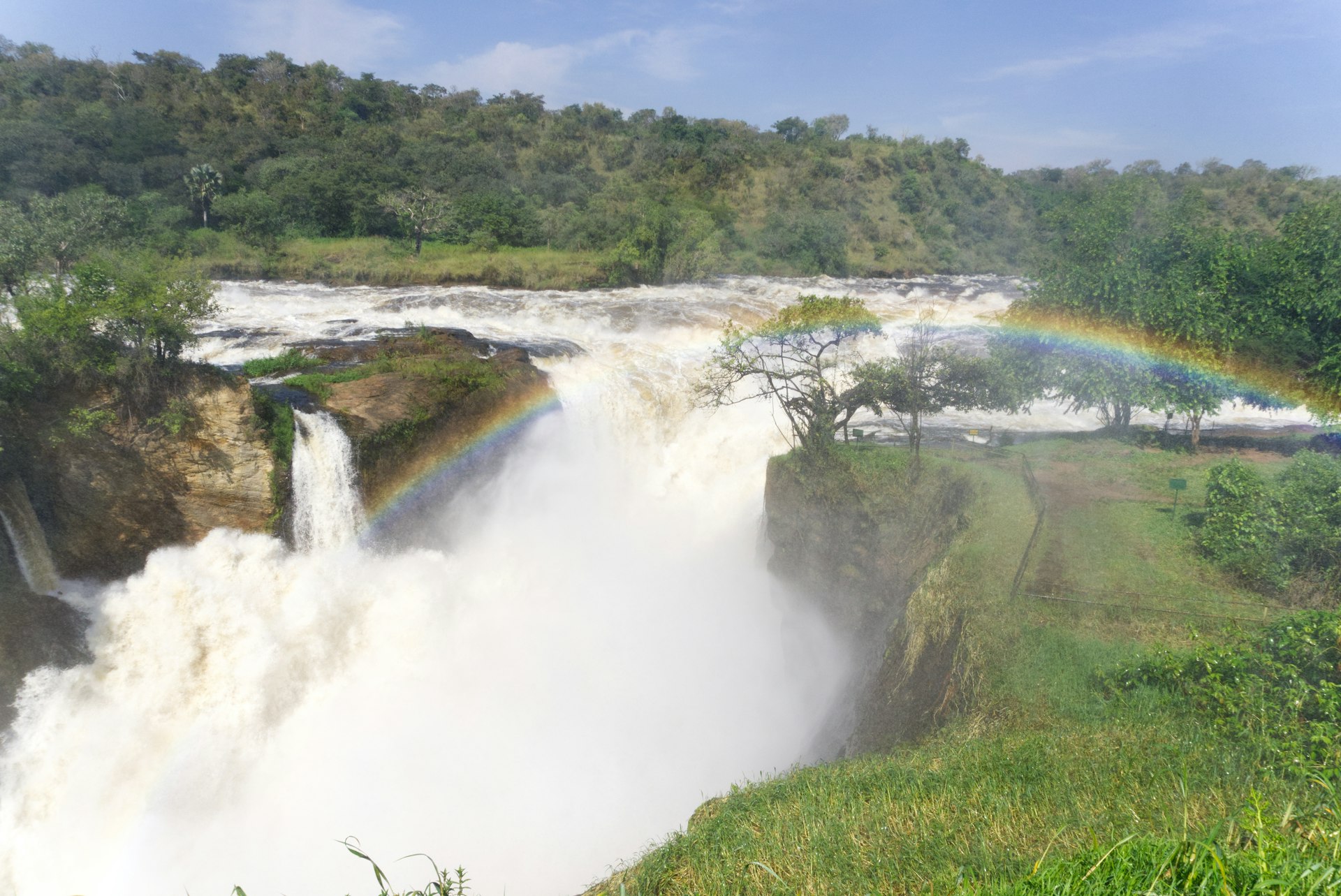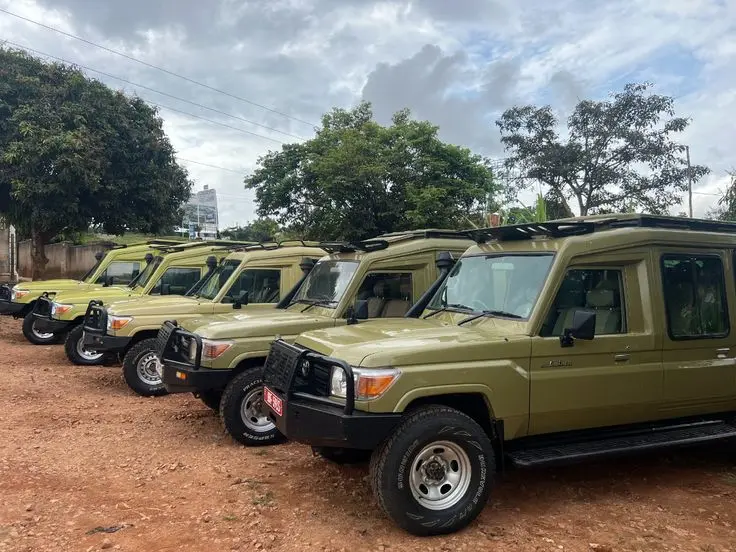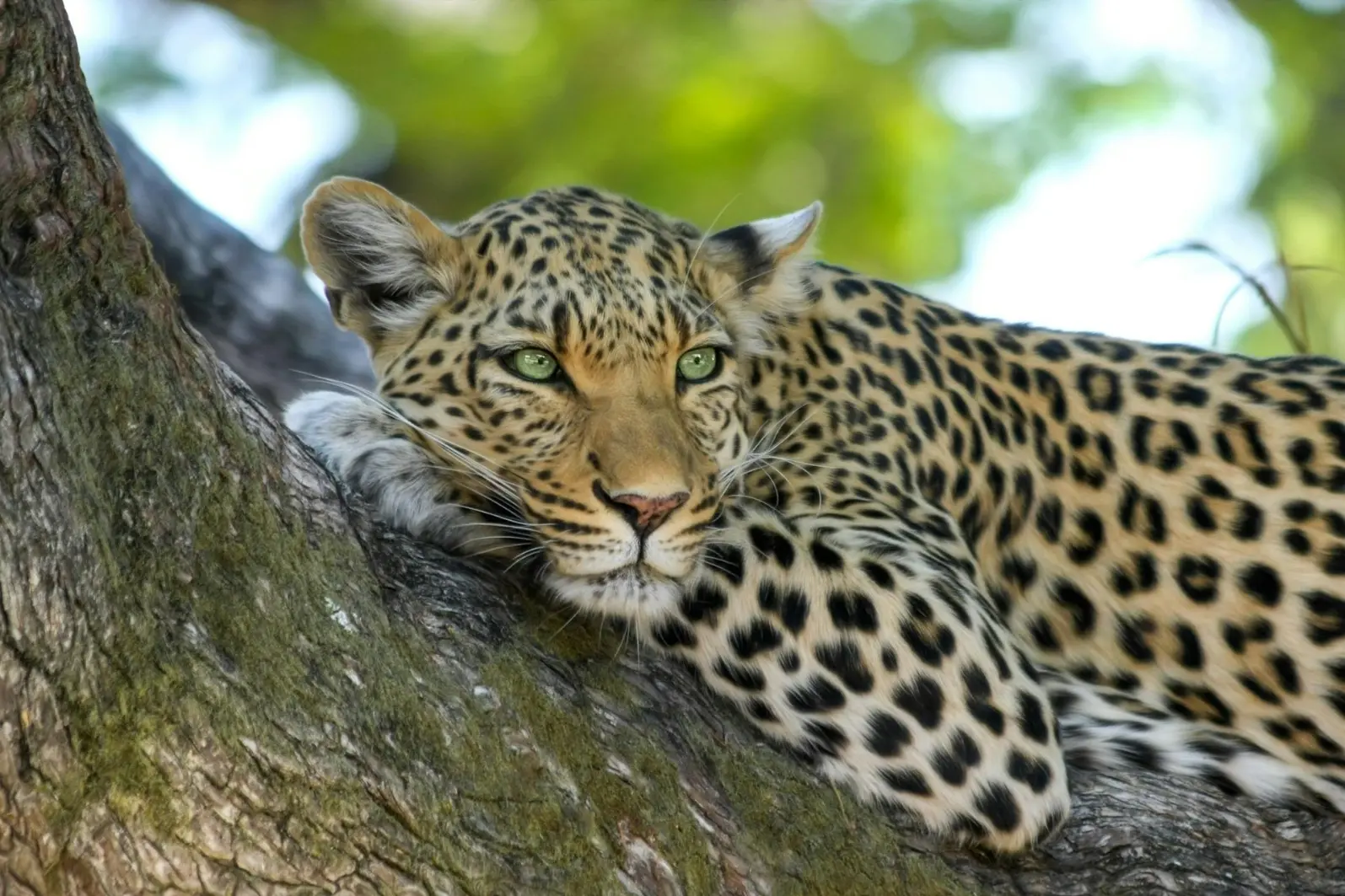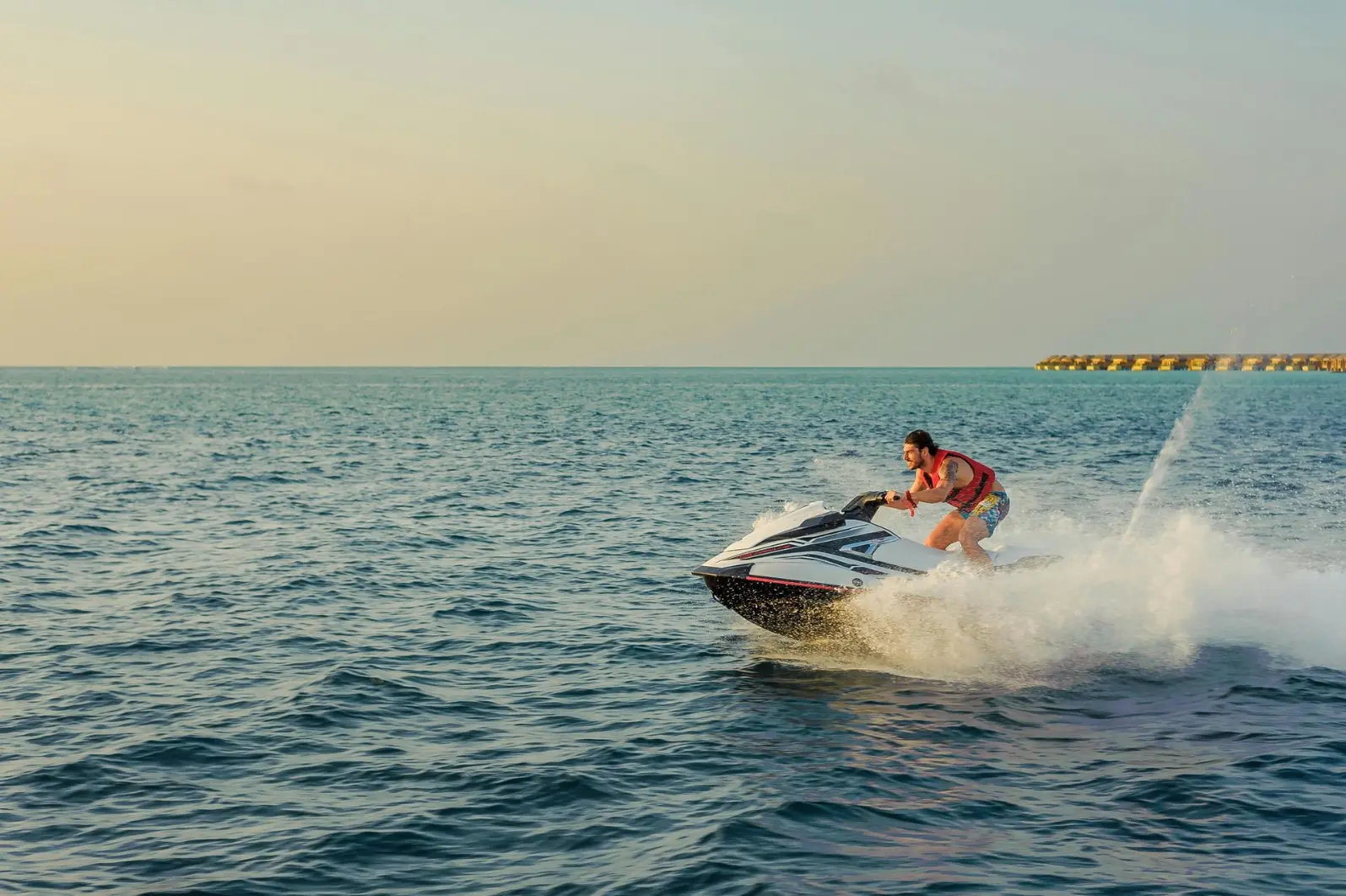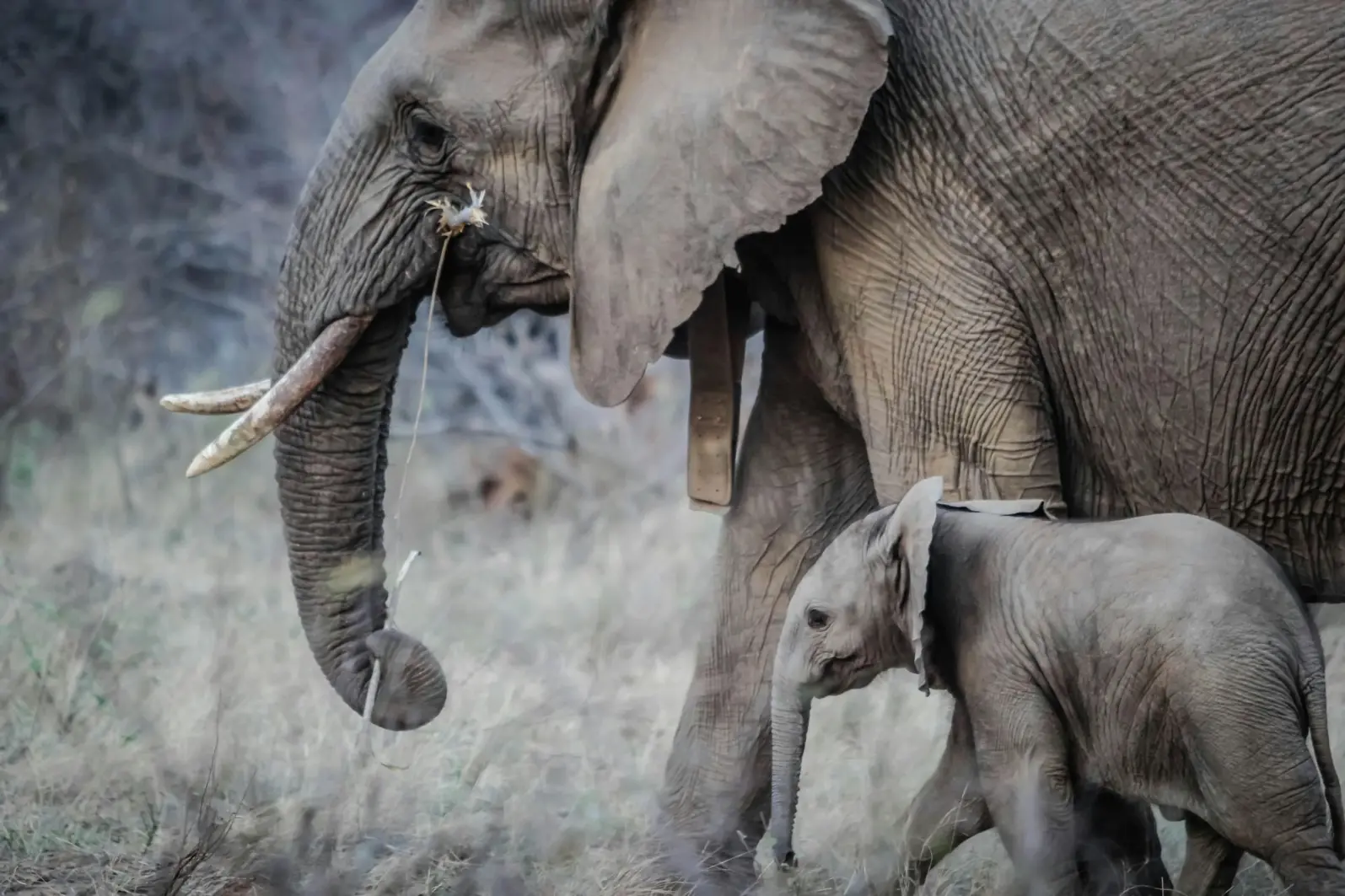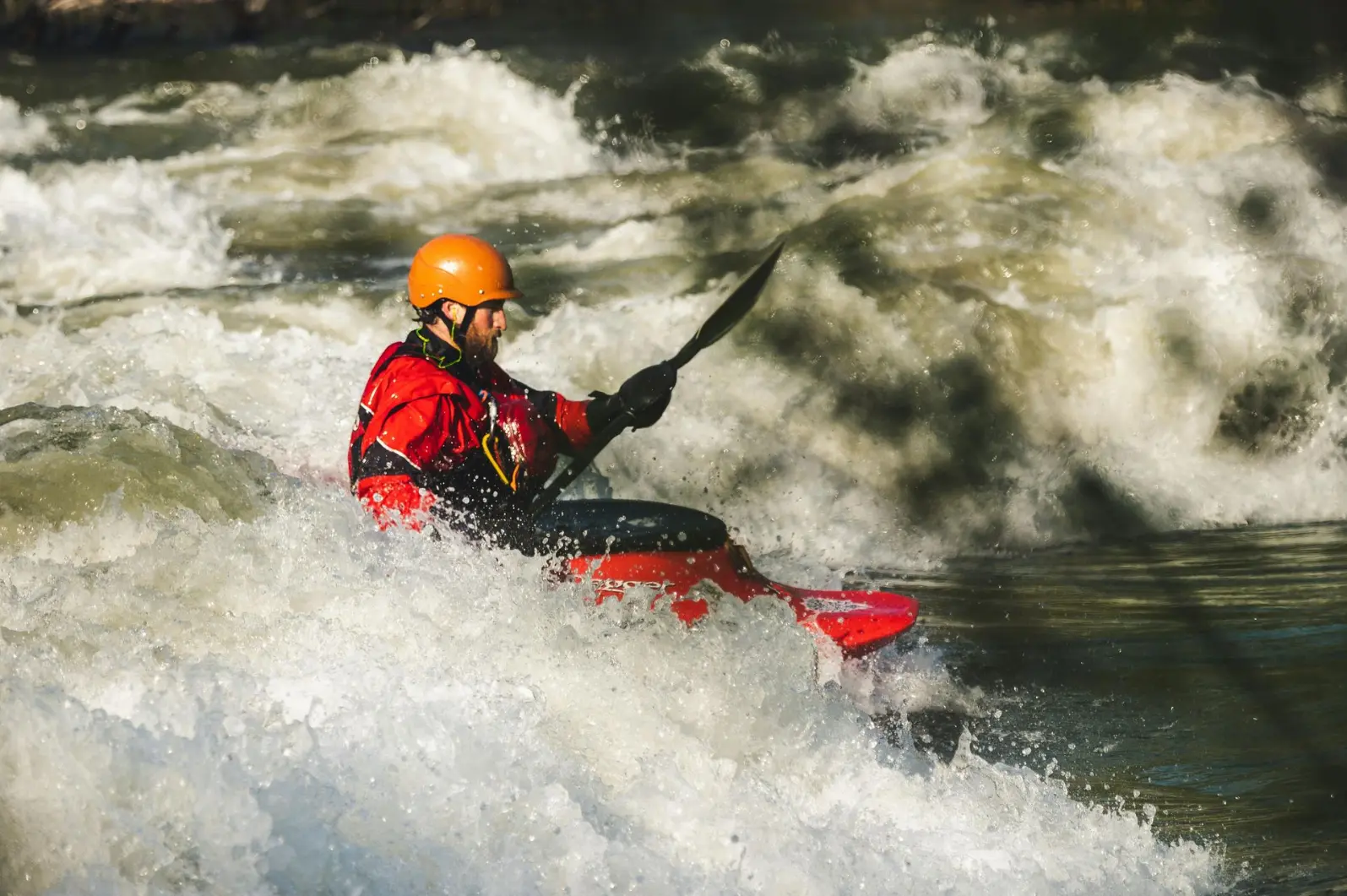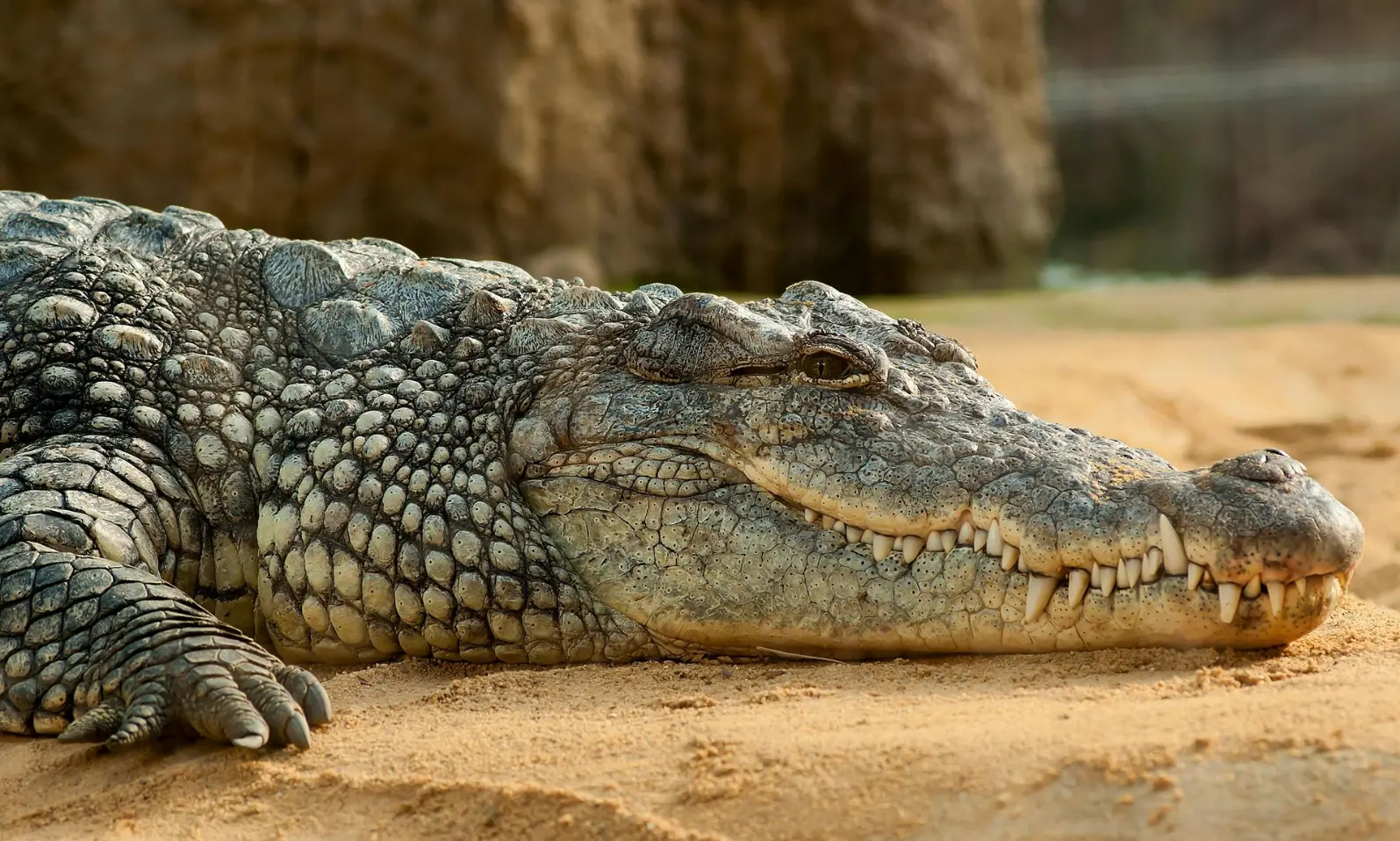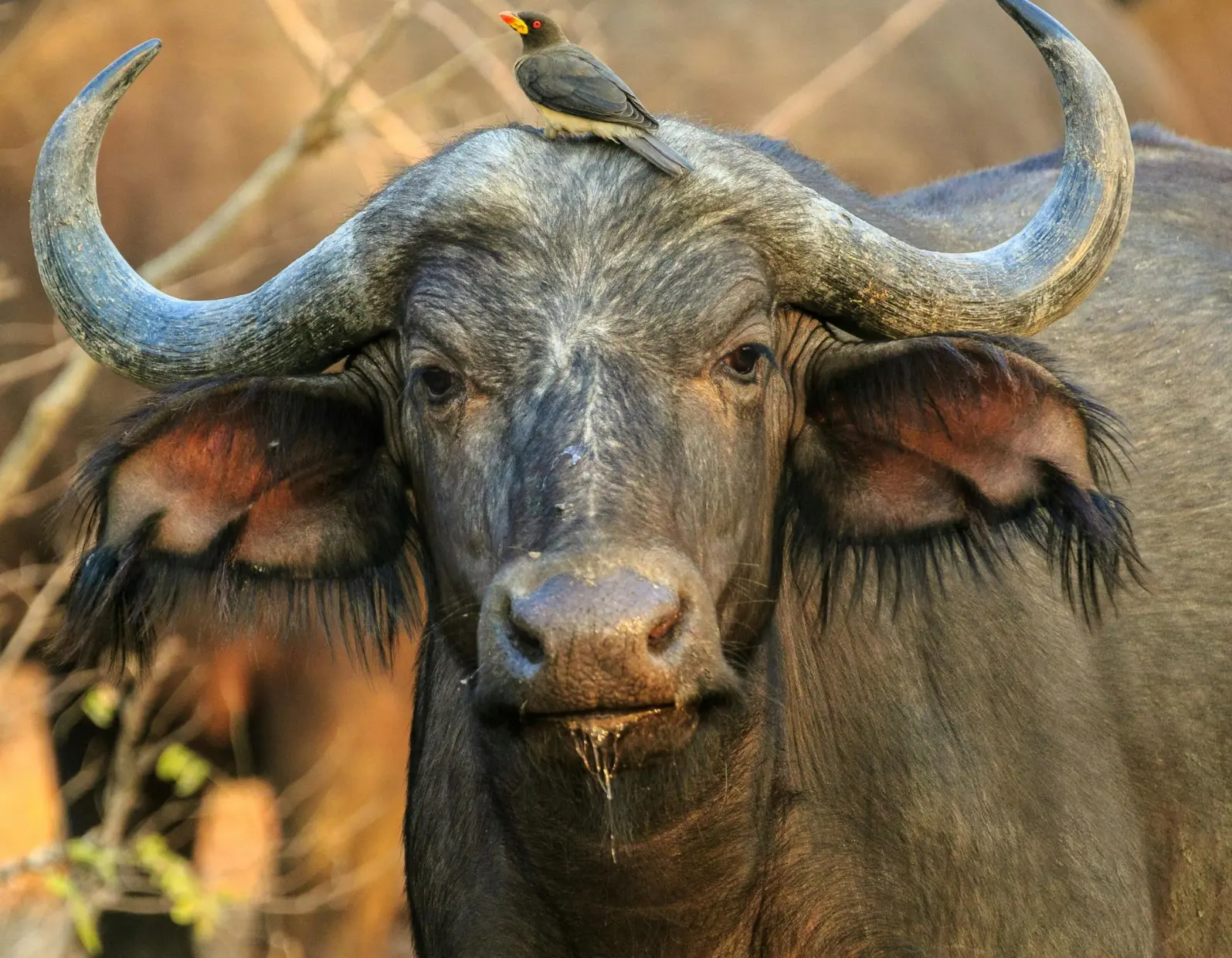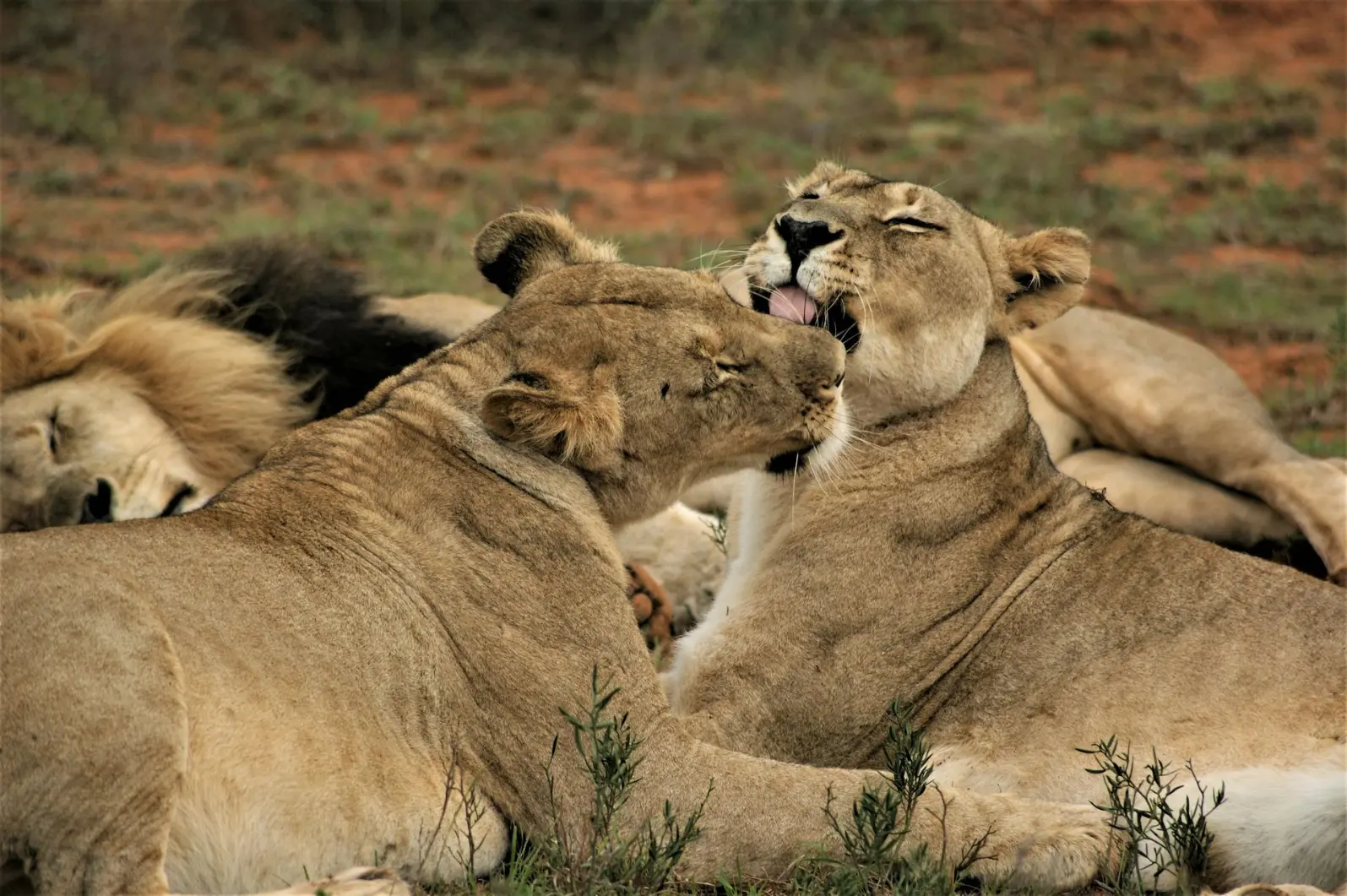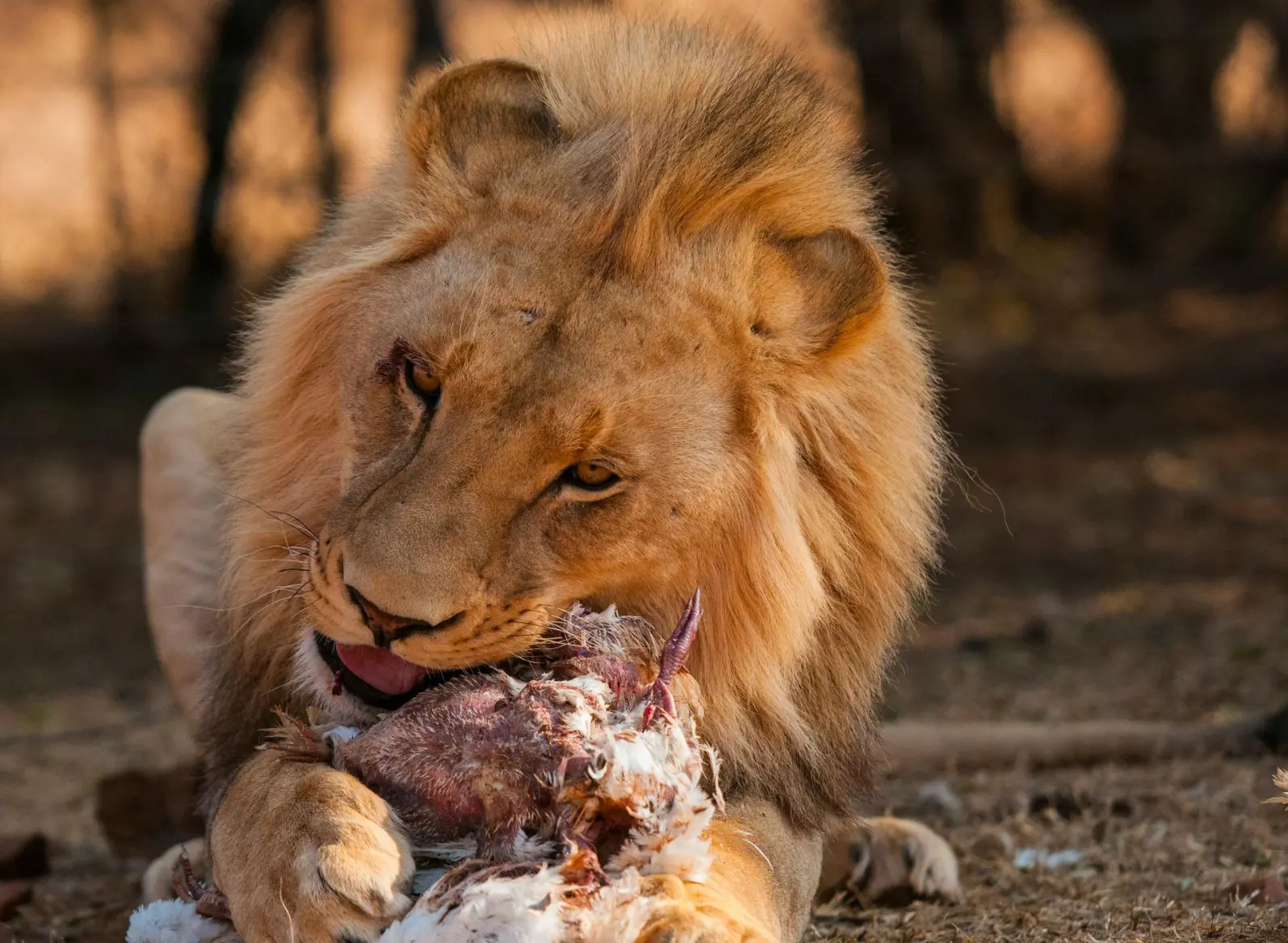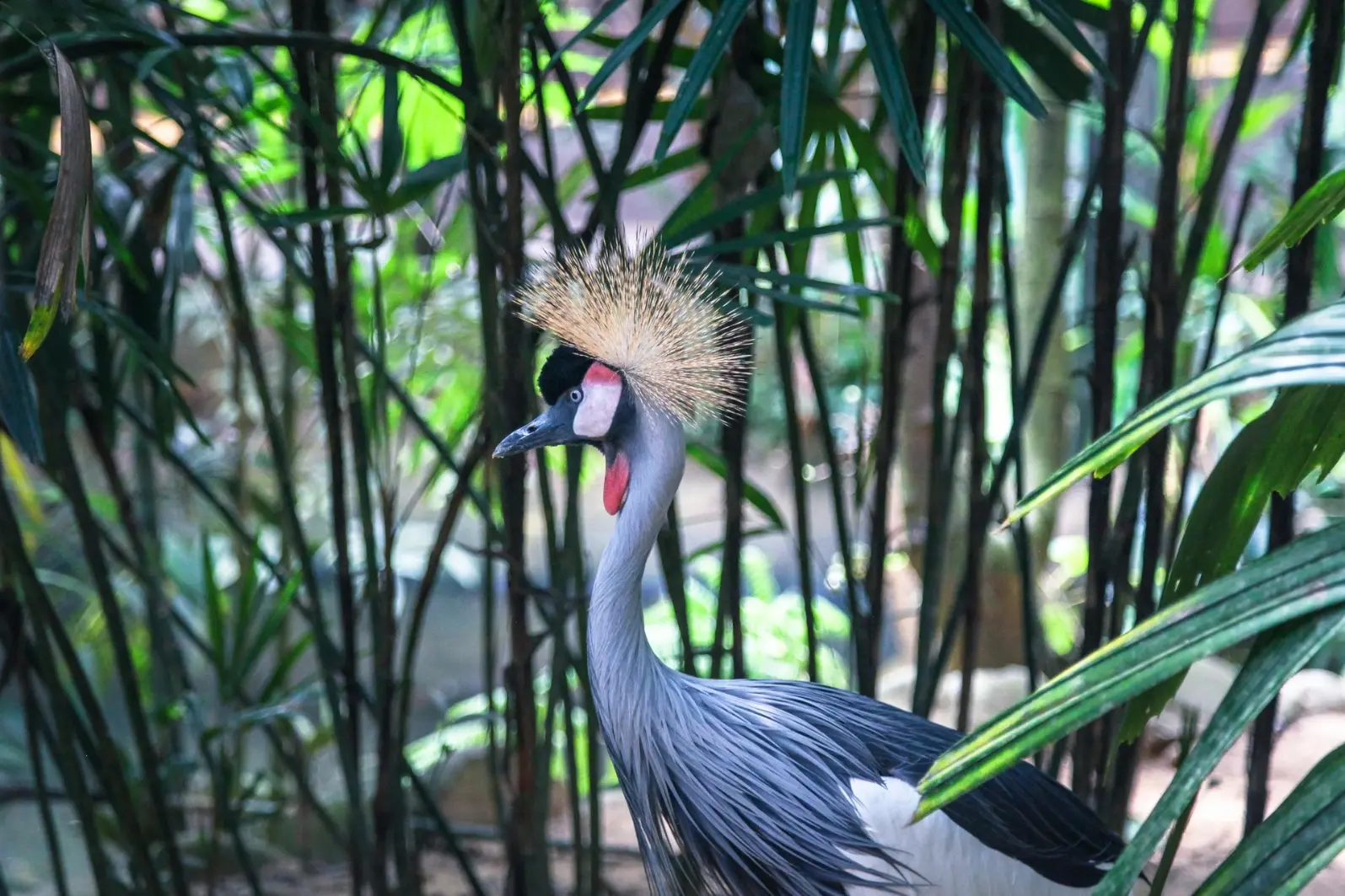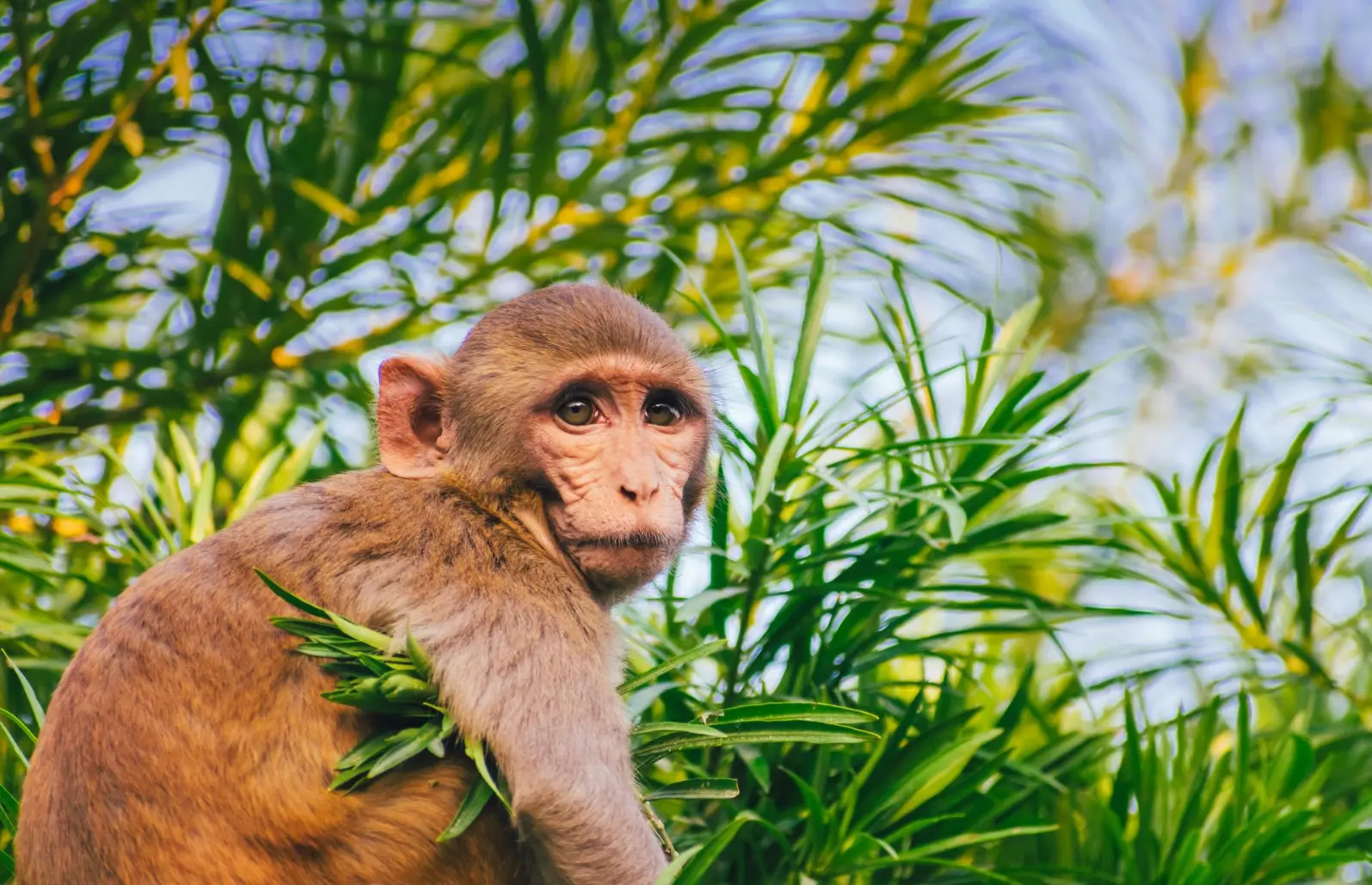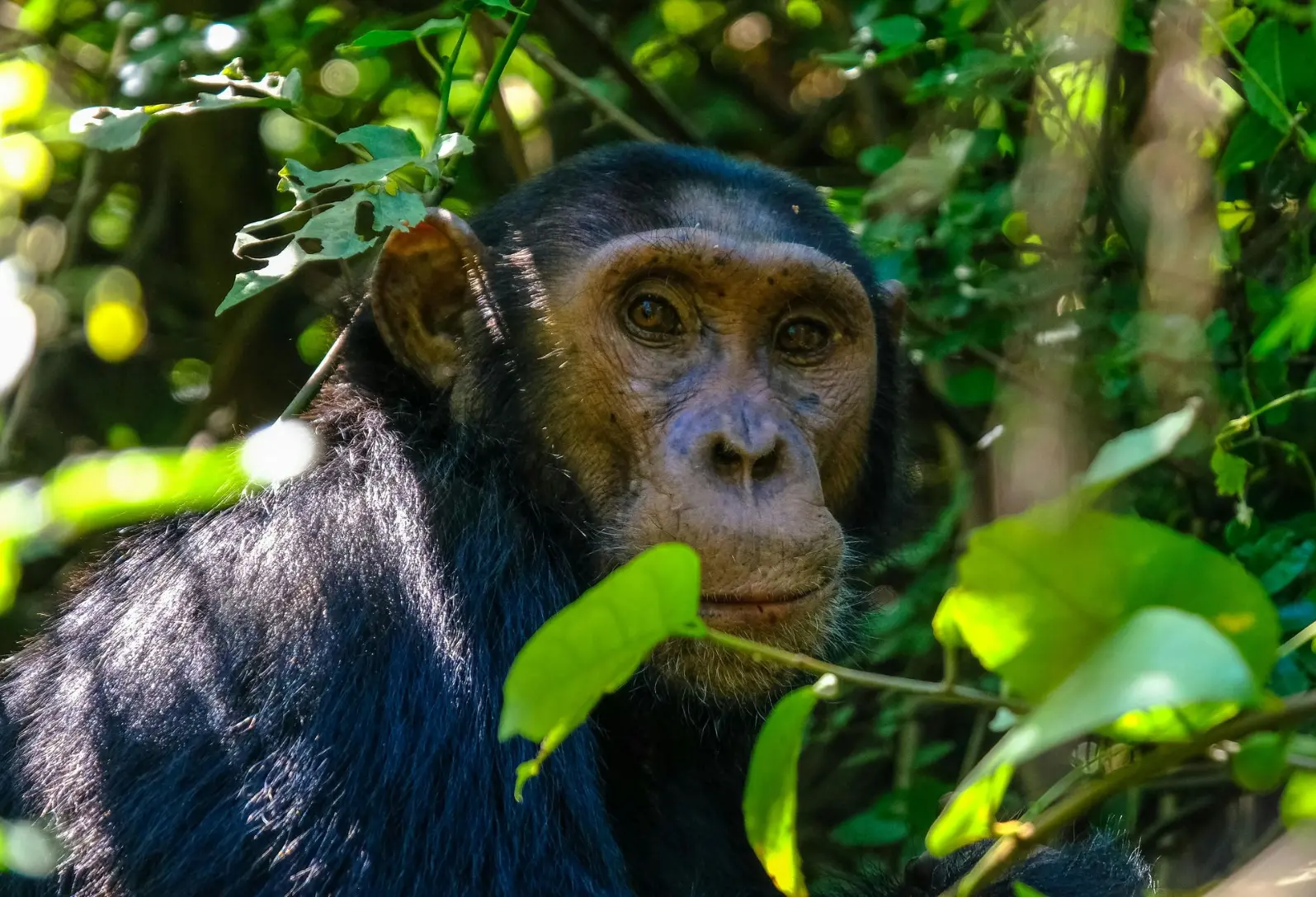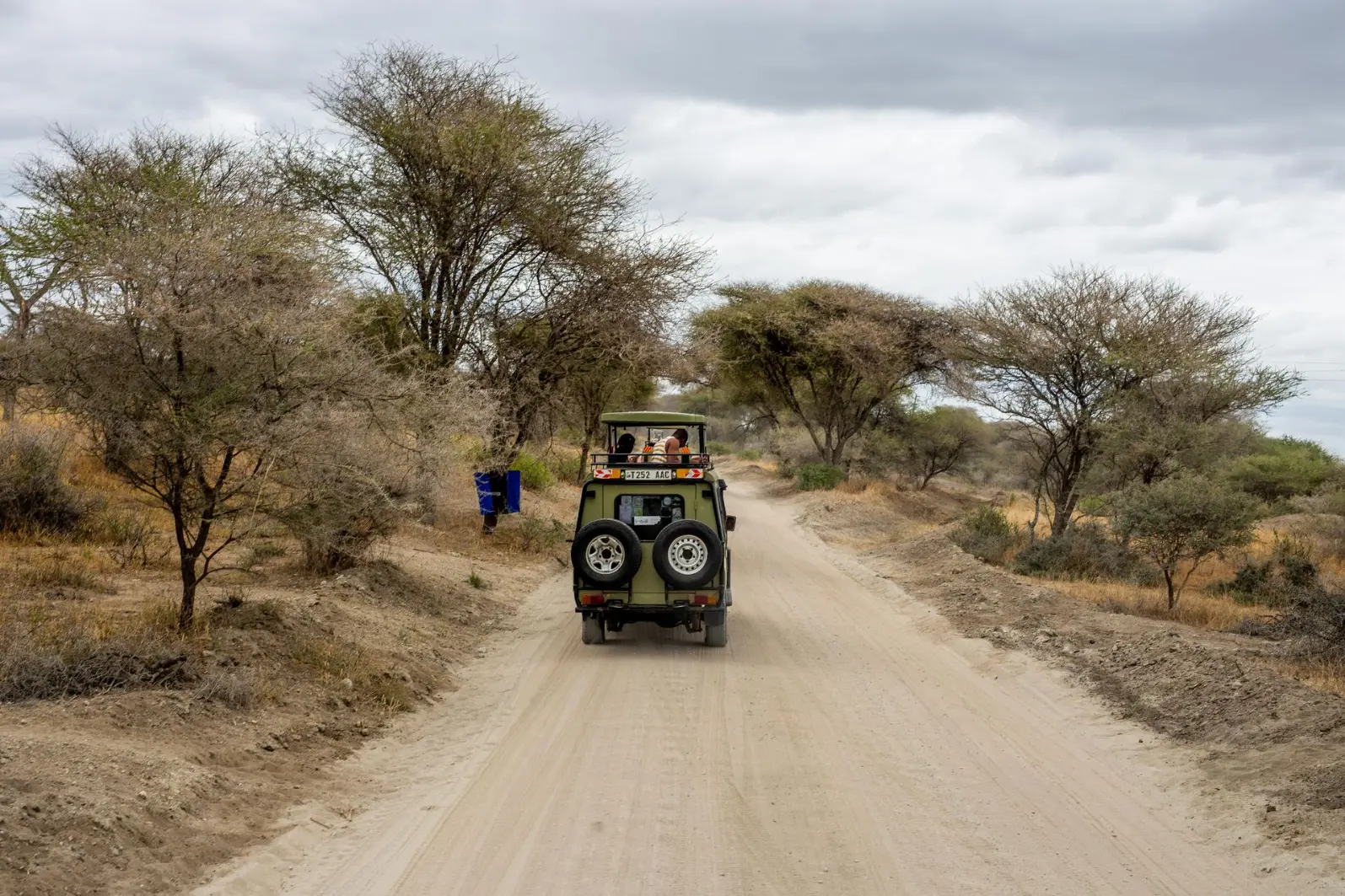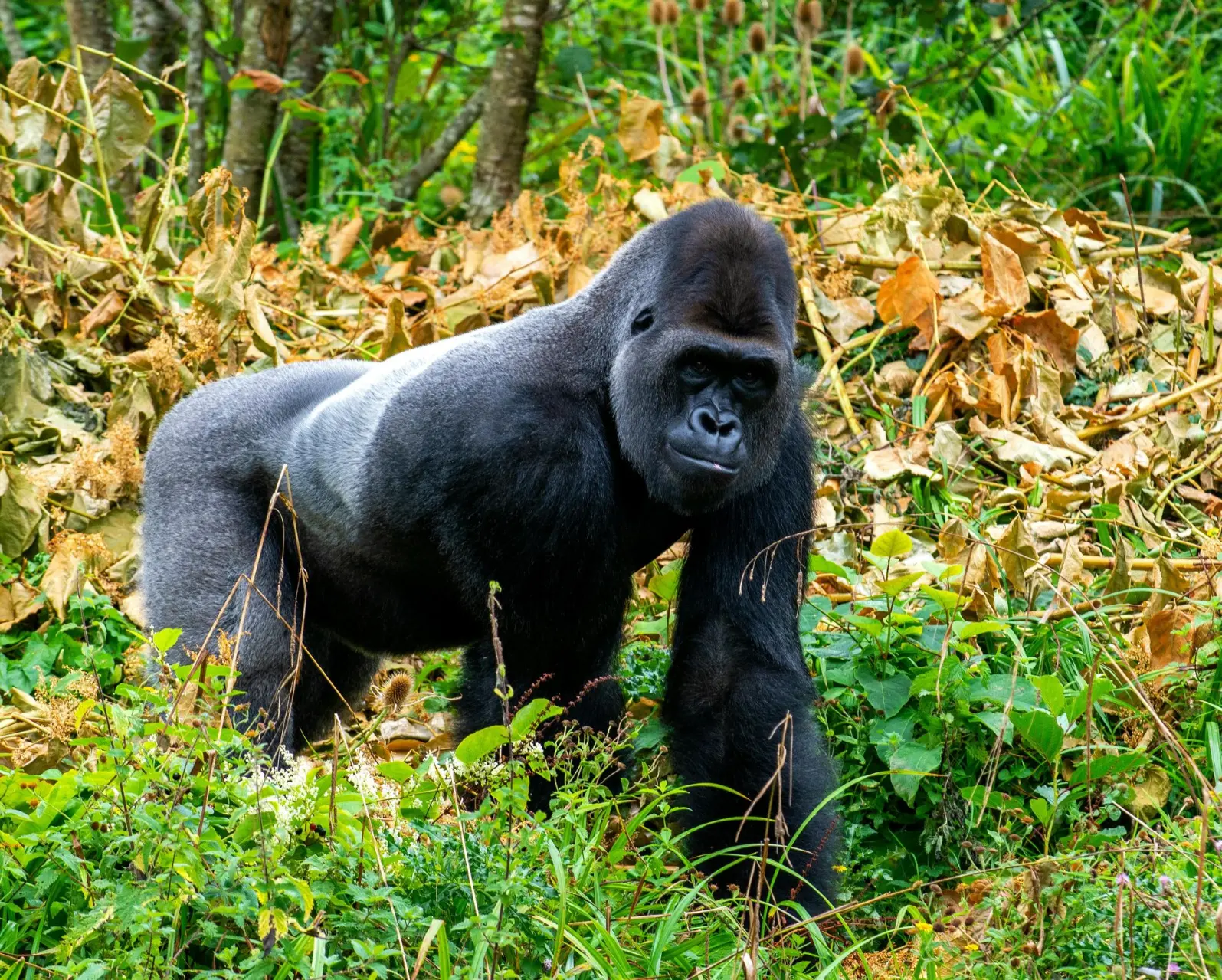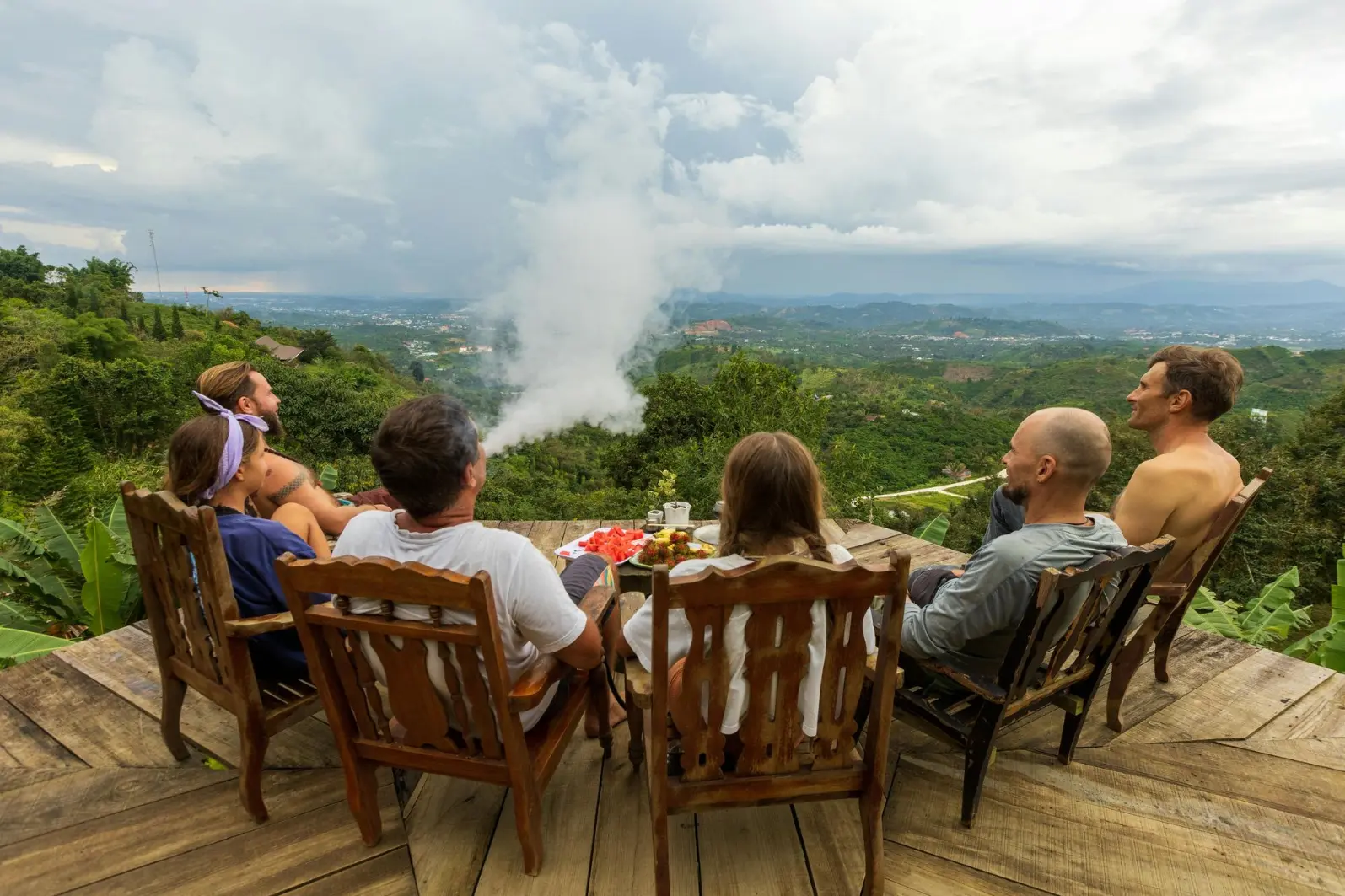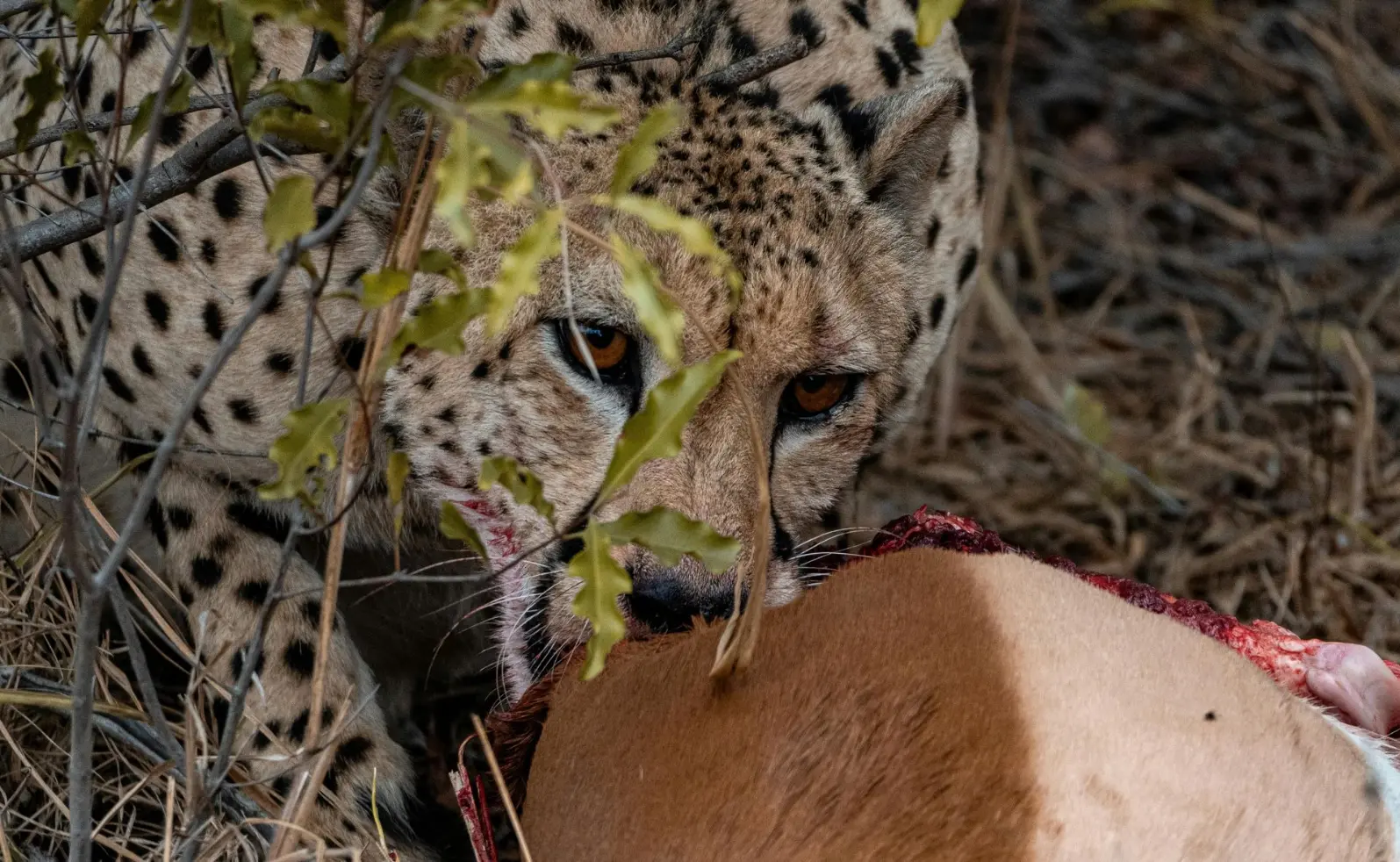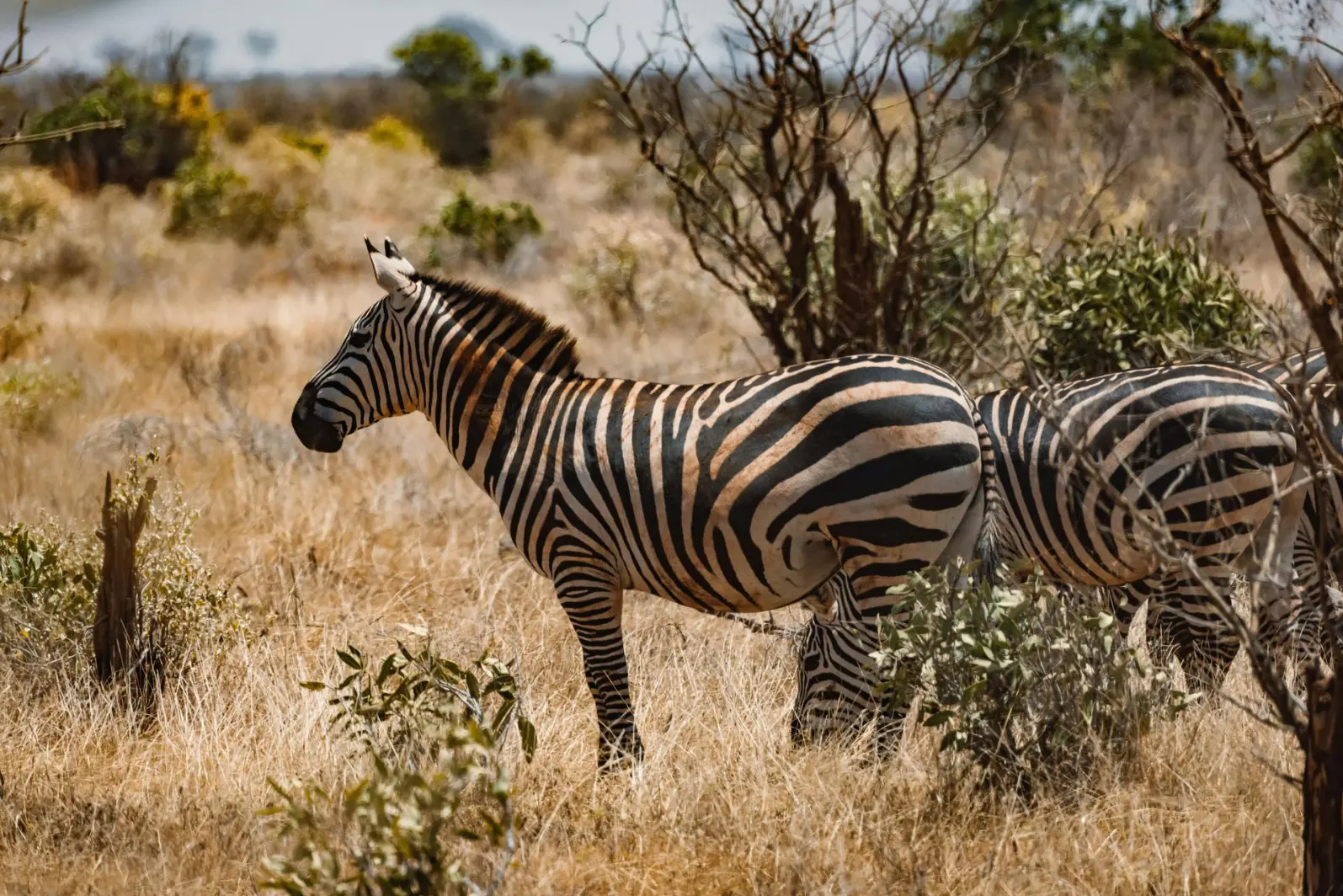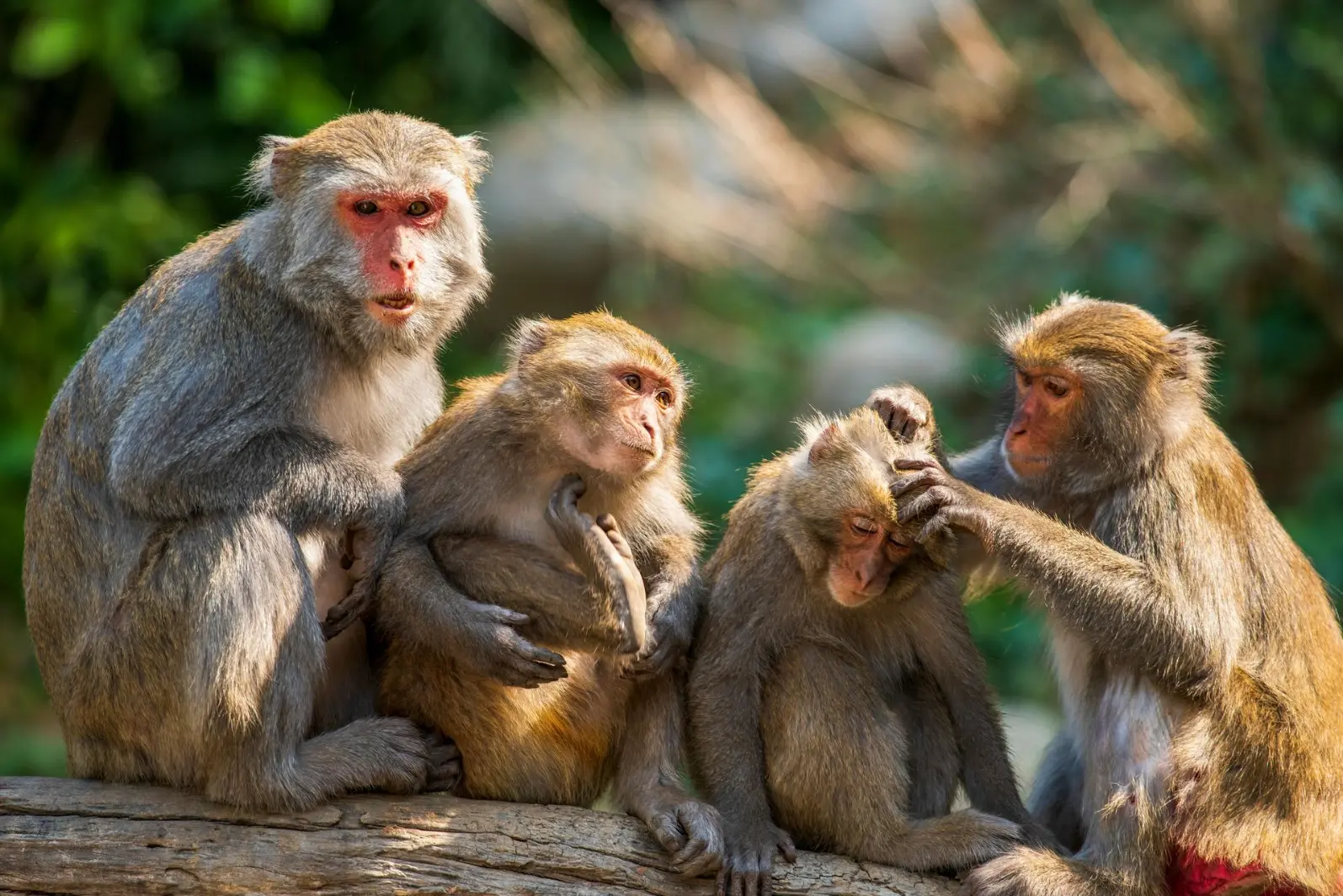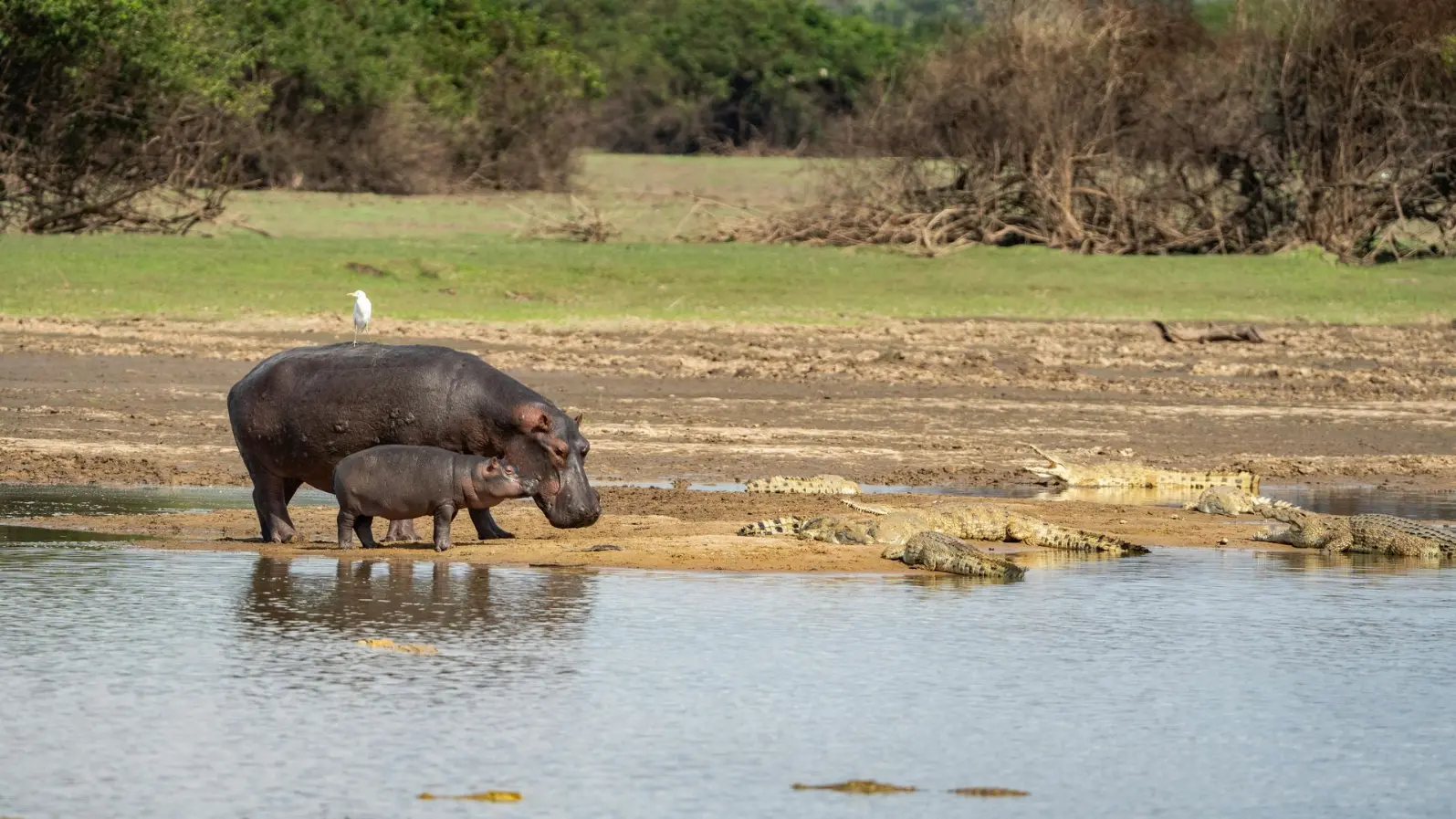Top Featured Uganda Gorilla Tours
Our Tour Experiences

Solo Travelers
Embark on a journey of self‑discovery with our solo travel packages. Designed for independence, reflection, and adventure, these tours let you explore at your own pace while still enjoying the safety and support of our team.
Up to 5% Discount

Group Travelers
Travel is better together! Our group tours bring friends, colleagues, and communities closer through shared experiences, laughter, and unforgettable adventures. Perfect for bonding and creating lasting memories.
Up to 10% Discount

Educational Tours
Learning comes alive when experienced in nature and culture. Our educational tours are tailored for schools and institutions, blending adventure with knowledge to inspire young minds.
Up to 15% Discount

Family Friendly Tours
We craft itineraries that balance fun, comfort, and learning for all ages. From child‑friendly activities to relaxing moments for parents, our family tours ensure everyone enjoys the journey.
Up to 15% Discount
Testimonials from our clients!
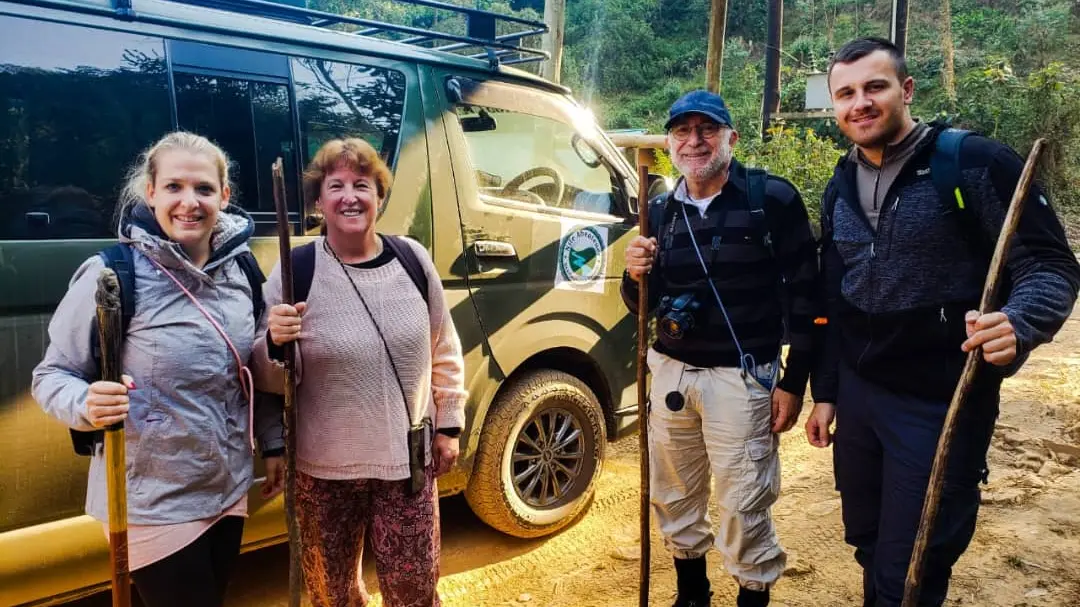
Three Countries, One Safari Adventure
Experience the Wild Heart of East Africa in One Seamless Journey
Step into a once-in-a-lifetime adventure that spans three of Africa’s most iconic safari destinations. This carefully crafted circuit takes you from the rolling savannahs of Kenya’s Masai Mara, across the endless plains of Tanzania’s Serengeti and Ngorongoro Crater, and into the misty rainforests of Uganda’s Bwindi Impenetrable National Park. It’s the ultimate blend of classic game drives, breathtaking landscapes, and rare primate encounters.
What Makes This Safari Unique
Three Countries, One Journey: Seamlessly cross borders with expert-guided logistics.
The Great Migration: Witness millions of wildebeest and zebra thundering across the Mara–Serengeti ecosystem.
The Big Five: Lions, leopards, elephants, buffalo, and rhinos in their natural habitats.
Primate Encounters: Trek endangered mountain gorillas in Bwindi and meet Uganda’s vibrant communities.
Cultural Immersion: Connect with Maasai warriors on the savannah and Batwa forest dwellers in Uganda.

Kenya, Tanzania & Uganda
15-Day Kenya, Tanzania Safari & Uganda Gorilla Trekking
15 Days & 14 Nights

Zanzibar, Uganda, Kenya, & Tanzania
12-Day Uganda, Kenya, Tanzania & Zanzibar Ultimate Safari
12 Days & 11 Nights

Rwanda, Tanzania, Kenya & Uganda
14-Day Kenya, Tanzania, Uganda & Rwanda Primate and Wildlife Safari
14 Days & 13 Nights
Explore Our Core Services
East Africa’s Tourism Pulse in 2025
The East African region, encompassing Uganda, Kenya, Tanzania, Zanzibar, and Rwanda, has cemented itself as a global hotspot for adventure, wildlife, and cultural tourism in 2025. In the wake of pandemic recovery and surging global interest in sustainable, authentic travel, inbound tour operators like Nile Abenteuer Safaris are poised to attract an increasingly diverse range of international visitors. Current tourism trends emphasize not just the region’s iconic wildlife and landscapes but also immersive cultural experiences, responsible travel, and seamless cross-border logistics.
Our Top Notch Tour Services for you!
Discover what is the best travel options for you.
Uganda Gorilla Permit Cost
- 1 Gorilla Trekking Permit
- Experienced Guide
- Gorilla trekking Certificate
- Park Entrance for 1 Day
- Learn More
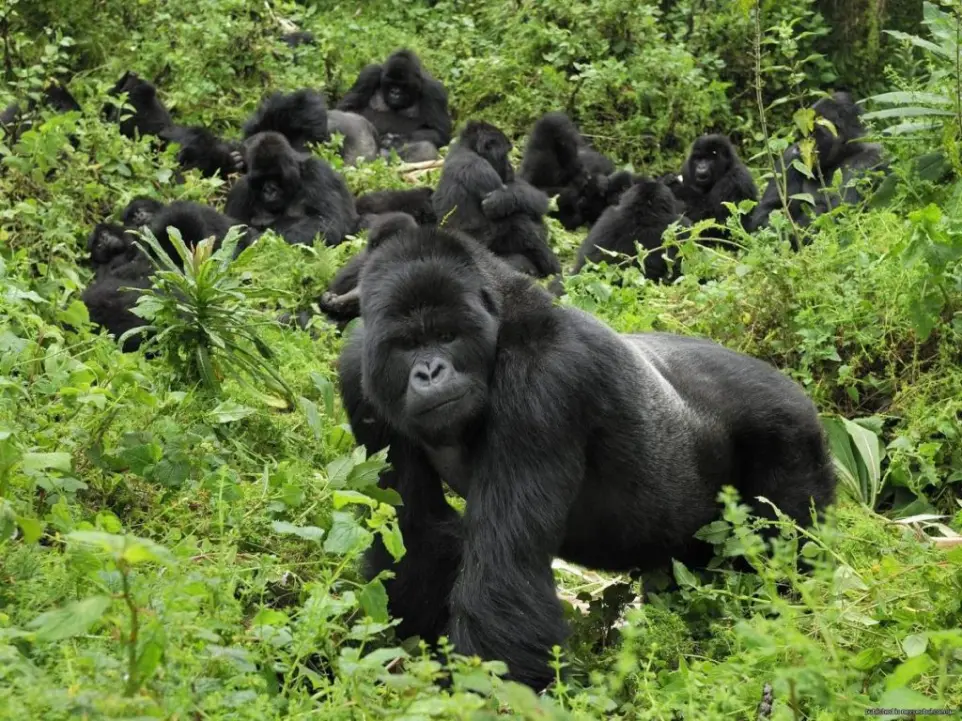
Uganda Chimpanzee Tracking Cost
- 1 Chimpanzee Permit
- Experienced Guide
- Park Entrance for 1 Day
- Tour customization
- Learn More
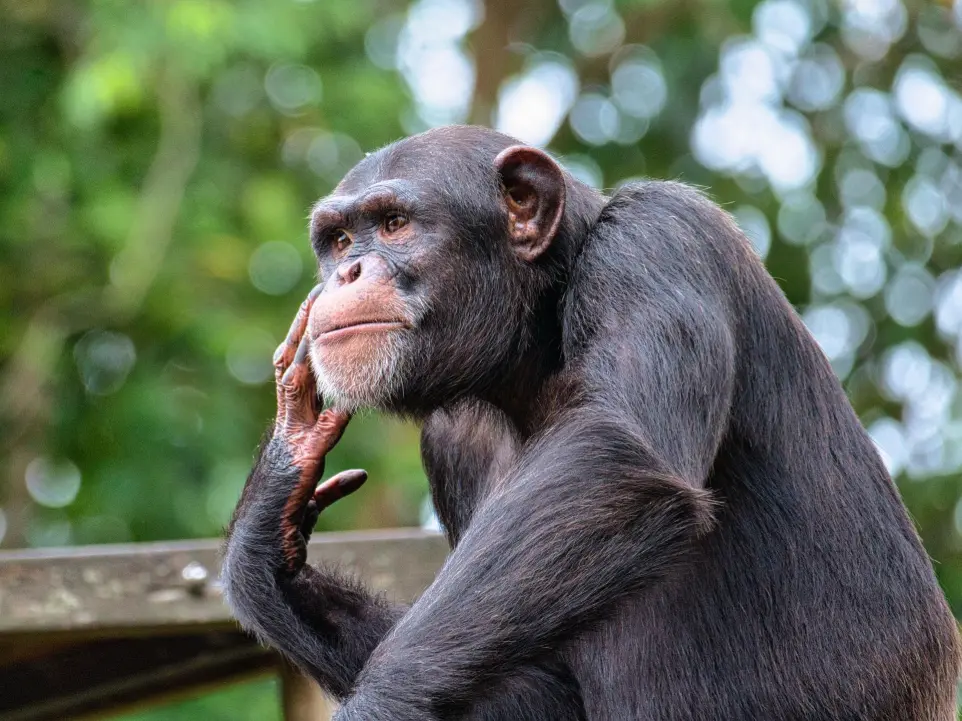
Best-Selling Safari Itineraries
Book Now & Pay Later at your convenience!
Abenteuer Travel Styles
At Nile Abenteuer Safaris, we design journeys for every traveler’s style and budget - our Luxury Tours offer exclusive experiences with premium lodges, private game drives, and personalized service; our Midrange Tours balance comfort and value with carefully selected accommodations and authentic cultural encounters; and our Budget Tours make East Africa’s breathtaking landscapes and wildlife accessible through affordable, safe, and enriching adventures, ensuring that whether you seek indulgence, balance, or affordability, your safari is always unforgettable.

Luxury Tours & Safaris
Luxury safaris in Uganda redefine the meaning of adventure, offering an elegant, seamless journey into the heart of Africa’s most captivating landscapes.
These experiences are curated for discerning travelers who seek privacy, exclusivity, and elevated comfort, paired with rare access to Uganda’s most iconic wildlife and cultural treasures. Luxury safaris are designed to deliver effortless immersion with every detail tailored to perfection.
Price usually ranges from $800 - $1,500 per person per-day

Midrange Tours & Safaris
Midrange safaris offer the perfect balance between affordability and elevated comfort, ideal for couples, families, and small groups seeking a personalized, enriching experience without the cost of ultra-luxury travel.
Travelers who opt for midrange safaris are looking for dependable comfort, customized pacing, and meaningful experiences. They value quality over extravagance and prefer private or semi-private arrangements that allow for deeper exploration and relaxation.
Price usually range from $400 - $650 per person per-day

Budget Tours & Safaris
Budget safaris are designed for travelers who prioritize experience over extravagance. These trips strip away the frills to focus on what truly matters: breathtaking wildlife, vibrant local culture, and genuine human connection.
Why Choose: Great for backpackers, students, or anyone seeking an affordable, yet awe-inspiring - wildlife experience without excessive comfort.
Price usually ranges from $200 - $350 per person per day
Our tour booking in four easy steps
1
Explore our Tours
Discover our curated safari itineraries and select the adventure that best suits your travel dreams.
2
Submit your inquiry
Share your preferred dates and group details through our booking form or direct contact.
3
Tailor your itinerary
Our travel specialists will confirm availability and refine the program to match your expectations.
4
Confirm your booking
Secure your safari with a deposit and receive your official confirmation, ensuring your place on this unforgettable journey.
Tours in Your Language
English

German
Dutch

Italian

Kiswahili
Arabic

Spanish

French

Our latest content
Check out for our latest blogs, news and travel tips to East Africa

Uganda Cultural Tours
Did you know that....
Uganda has over 50 ethnic groups each with distinct traditions, music, dance, and cuisine. From the rhythmic Kiganda dances to the communal spirit of sharing meals like matoke and groundnut sauce, visitors are warmly welcomed into a culture that celebrates unity, storytelling, and respect. Don’t miss a chance to witness traditional ceremonies or explore local crafts, they’re not just beautiful, they’re deeply meaningful.
Top 10 FAQs About Uganda Safari & Tourism
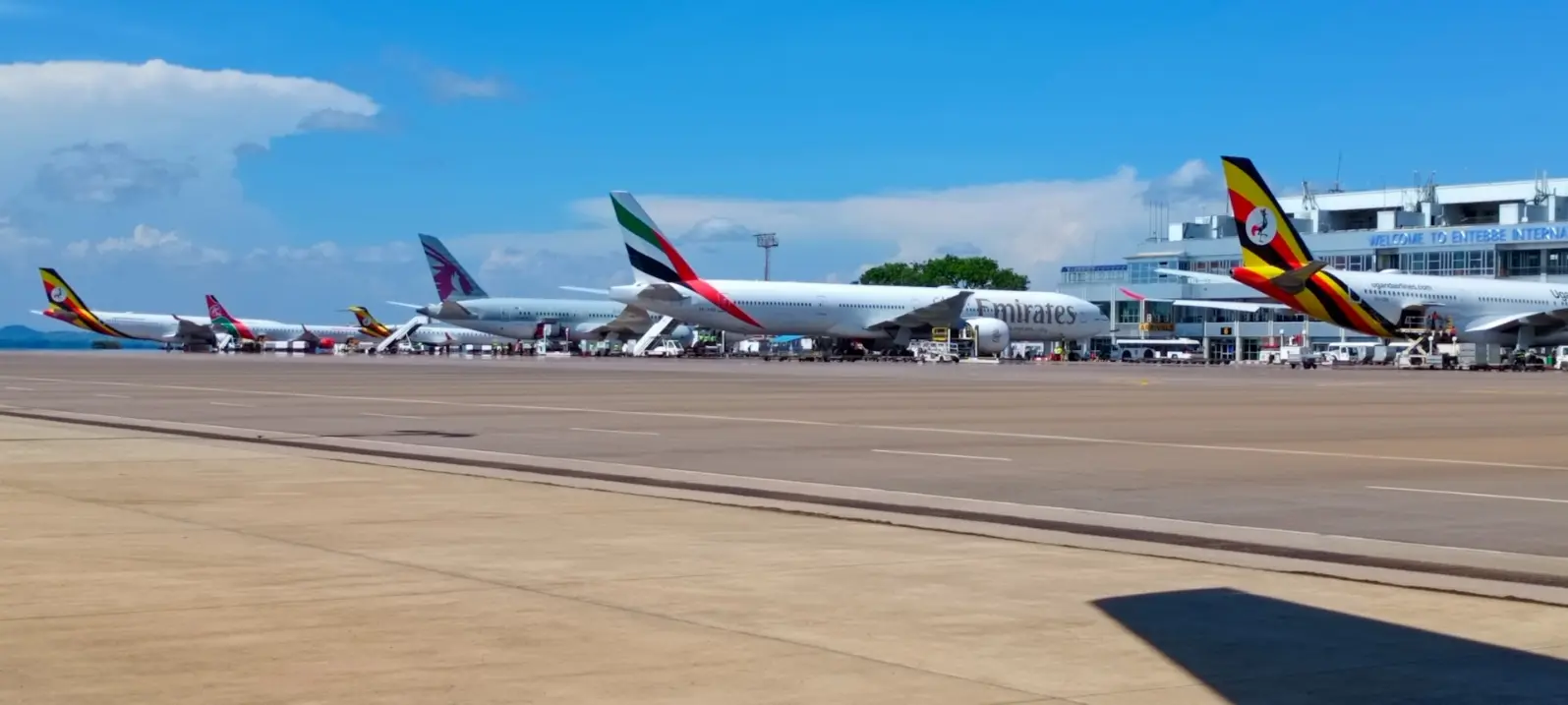
Air crafts in Entebbe International Airport in Uganda
| Season | Months | Highlights | Considerations |
|---|---|---|---|
| Long Dry Season | June–August | Peak wildlife, prime gorilla trekking, easy access | Higher demand, book early |
| Short Dry Season | December–February | Great for game drives, less crowded than June–August | Warm; best for photographers |
| Long Rains | March–May | Lush scenery, birdwatching, low prices | Slippery trails, heavier rain |
| Short Rains | September–November | Birdwatching, newborn animals | Fewer crowds, some road/trail challenges |
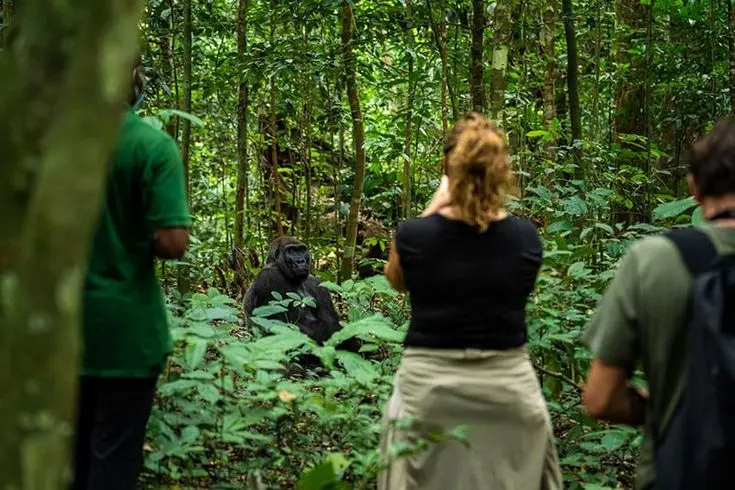
A group of tourists from Nile Abenteuer Safaris trekking Mubare gorilla Family in Bwindi Impenetrable National Park.
- Bwindi Impenetrable National Park – World-famous for gorilla trekking, home to nearly half the world’s mountain gorilla population. Activities: gorilla tracking, birdwatching, forest hikes.
- Queen Elizabeth National Park – Uganda’s most visited park, celebrated for its diverse landscapes (savannah, wetlands, crater lakes), tree-climbing lions (Ishasha sector), Kazinga Channel boat cruises, and over 600 bird species.
- Murchison Falls National Park – Uganda’s largest park; famed for its thunderous waterfall where the Nile squeezes through a 7-meter gorge. Excellent for game drives, Nile boat cruises, and sightings of elephants, lions, giraffes, crocodiles, and hippos.
- Kibale National Park – The “primate capital” of East Africa, renowned for chimpanzee tracking, 13 primate species, and vibrant birdlife.
- Kidepo Valley National Park – Remote and rugged, offering a true wilderness experience with rare wildlife (cheetahs, ostriches, bat-eared foxes) and interactions with the Karamojong culture.
- Lake Mburo National Park – Smaller, easily accessible, excellent for walking and horseback safaris, with abundant zebras, impalas, and bird species.
- Mgahinga Gorilla National Park – Gorilla and golden monkey trekking, volcanic landscapes, Batwa pygmy culture.
- Rwenzori Mountains National Park – Iconic for mountaineering (“Mountains of the Moon”), glaciers, and alpine flora.
- Jinja – Source of the Nile – East Africa’s adrenaline capital with white-water rafting, kayaking, bungee jumping, and cultural experiences.

Kahungye Gorilla Family ready to receive our visitors in Bwindi Impenetrable National Park
- Booking Source: All official gorilla permits are issued by the Uganda Wildlife Authority (UWA), you can book directly via UWA’s headquarters in Kampala, but most international travelers book through a UWA-registered, local tour operator (Nile Abenteuer Safaris), for convenience. International operators partner with local agencies for seamless logistics.
- Advance Booking: High demand during the dry (peak) seasons - June to September, December to February, means permits often sell out 6–12 months in advance. Even in the low season, booking 3–6 months ahead is wise.
- Permit Prices (2025):
- USD 800 per trek for foreign non-residents (Per person)
- USD 700 for foreign residents (Per person)
- UGX 300,000 for East African citizens (Per person)
- The permit includes one hour with a designated gorilla family, park entry, and a ranger guide.
- Booking Process: Confirm your travel dates with your tour operator who will check permit availability in real time via UWA’s online system. Full payment (often by bank transfer) secures your spot; you’ll get a confirmation/receipt, and the actual permit is collected closer to your trek date.
- Permit Validity: Only valid for a specified date and park sector (Buhoma, Nkuringo, Rushaga, Ruhija for Bwindi or Nyakagezi for Mgahinga). Permits are non-refundable except for illness or exceptional situations.
- On the Day: Arrive by 7:30–8:00 a.m. at park headquarters for briefing and group assignment. Groups are limited to 8 trekkers per gorilla family per day.
- Shoulder (wet) seasons (March–May, October–November) offer better permit availability and sometimes lower prices or shoulder-season discounts for other services.
- Booking an all-inclusive tour through a trusted operator can ensure permits, accommodation, and local transport are secured at once.
Summary Table: Uganda Gorilla Permit Facts
| Item | Details |
|---|---|
| Price (2025) | $800 non-resident; $700 resident; UGX 300,000 EAC |
| Where to buy | Uganda Wildlife Authority or registered operators |
| Required for | Bwindi, Mgahinga National Parks |
| Advance booking | 3–12 months (peak times sell out fast) |
| Seasonality | Peak: June–August, Dec–Feb; Wet: March–May, Oct–Nov |
| Validity | For one trek, pre-assigned family/sector/date |
| Inclusions | 1 hour with gorillas + ranger + park entry |
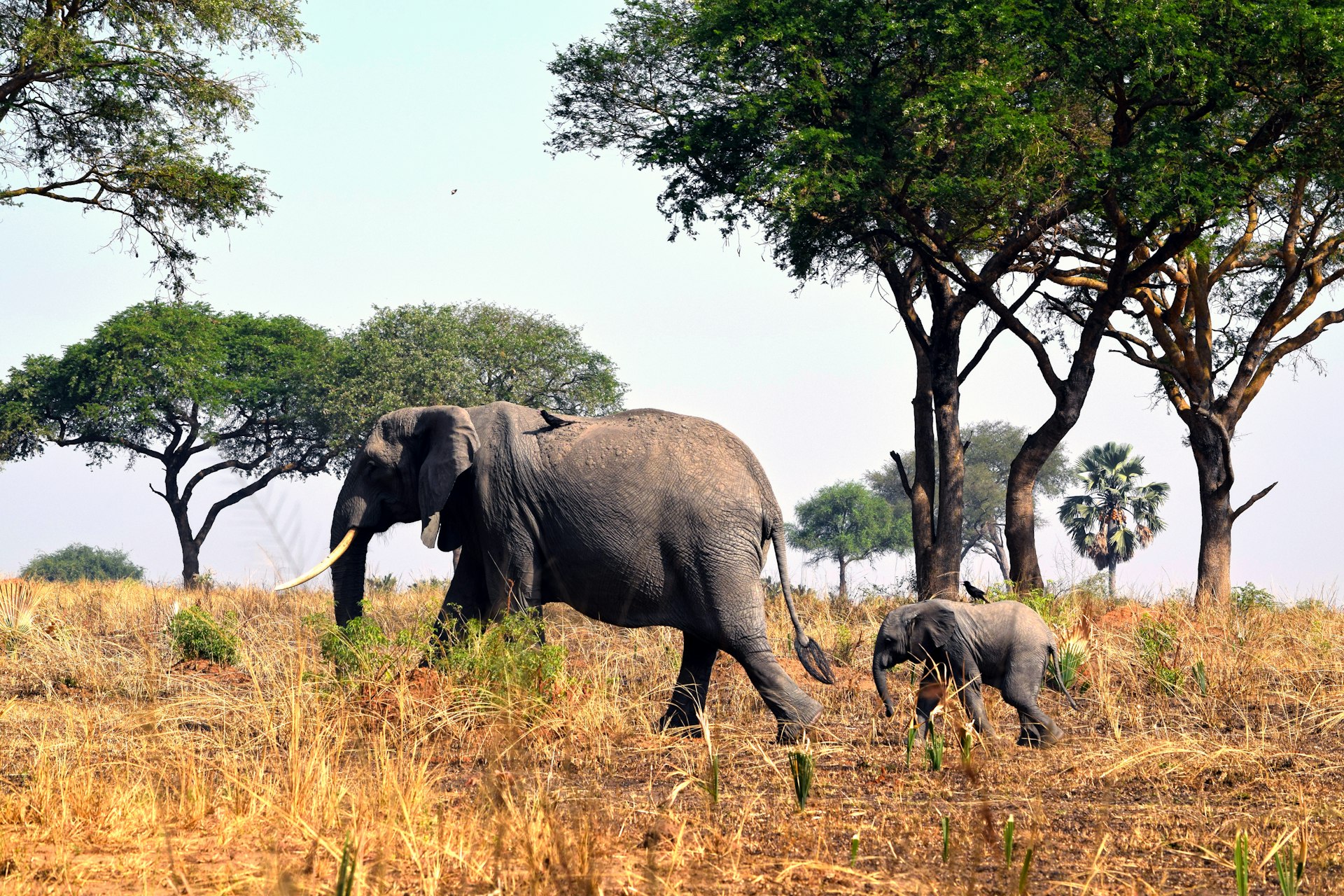
A female elephant with her calf in Murchison Falls National Park during safari game drive
- Gorilla Permit: Largest single expense for most; see FAQ 3 (USD 800 per person for non-residents).
- Safari Packages:
- Budget safaris: Start from USD 150–350 per person/day; basic accommodation, group tours, limited extras.
- Mid-range safaris: Usually USD 400–600 per person/day; private transport, comfortable lodges, activities included.
- Luxury safaris: USD 650–1,500+ per person/day; luxury lodges, fine dining, exclusive experiences, and private guides.
- Park Entry Fees: ~USD 40–45/day for most parks. Included in some tour packages.
- Chimpanzee Trekking Permit: USD 150–250 per person.
- Accommodation: Ranges from hostels (~USD 25–60/night), mid-range lodges (USD 80–200/night), to luxury eco-lodges (USD 300–1,000+/night).
- Transport: Private 4x4 with guide (~USD 150–200/day); shared safari vans for groups (USD 60–100/day per person); or fly-in safaris for higher-end travelers.
- Extra Activities: Boat safaris, guided walks, community/cultural visits (USD 10–50/activity).
- Food and Drinks: Most safari packages are “full board” (all meals included); budget for extras if self-catering or eating at tourist restaurants (USD 10–25/meal).
- Tipping and Miscellaneous: Guides/trackers typically tipped USD 10–15/person/day; tips not always included.
- International Flights, Visas, Vaccinations: Not usually included in safaris; see FAQs 5 and 6.
| Safari Type | Duration | Estimated Budget per Person | Inclusions |
|---|---|---|---|
| Budget | 3–7 days | $700–$1,500 | Group tour, dorm or hostel, meals, park fees |
| Mid-Range | 7 days | $2,000–$3,500 | Private guide, mid-range lodge, permits, meals |
| Luxury | 10 days | $5,000–$10,000+ | Luxury accommodation, domestic flights, private tours |
- Travel in green/low season (March–May, Oct–Nov) for reduced rates and potential permit discounts.
- Join group tours to split transportation and guide costs.
- Book with local tour operators for better value.
- Select fewer parks for shorter, cost-effective routes.
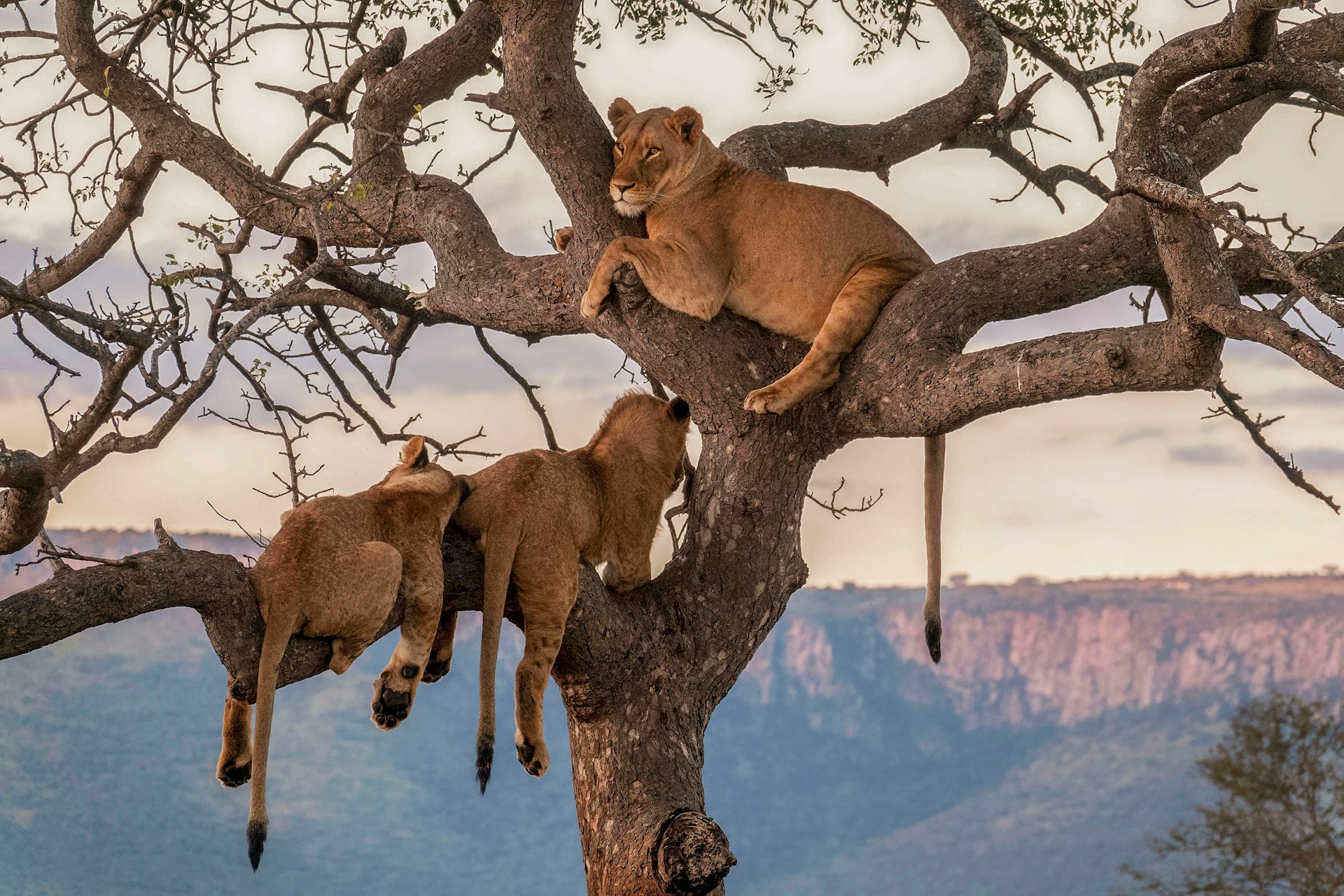
Tree climbing lions in Ishasha sector of Queen Elizabeth National Park during transfer to Bwindi
- Yellow Fever: A yellow fever vaccination certificate is required for all travelers aged 12 months or older entering Uganda. Proof of vaccination must be carried and shown at entry.
- Routine Vaccinations: Keep standard immunizations up to date: MMR (measles, mumps, rubella), polio, diphtheria-tetanus-pertussis, chickenpox.
- Hepatitis A and B: Strongly recommended for all travelers.
- Typhoid: Advised for most, especially those visiting rural areas or staying longer.
- Rabies: Consider for long stays, adventure travelers, or those in rural settings.
- Meningococcal meningitis: Sometimes advised, especially for travel during the dry season in crowded conditions.
- COVID-19: Recommended; entry requirements can change.
- Malaria: High risk across Uganda, especially in safari destinations. Use antimalarial medication (e.g., atovaquone-proguanil, doxycycline, mefloquine) as advised by your travel doctor. Apply insect repellent with DEET, wear long sleeves and pants, and sleep under mosquito nets.
- Other Precautions: Practice safe food and water routines: drink bottled/boiled water, avoid street food where hygiene is questionable, peel or wash fruit and vegetables, and be wary of ice in drinks.
| Vaccine/Precaution | Required/Recommended | Notes |
|---|---|---|
| Yellow Fever | Required | Certificate at entry |
| Malaria Prophylaxis | Strongly advised | Prescription only |
| Hepatitis A, B, Typhoid | Recommended | See travel clinic |
| Routine Immunizations | Recommended | Keep UTD |
| Rabies, Meningitis | If indicated | For longer visits/adventurers |
| COVID-19 | Recommended | Entry status can change |
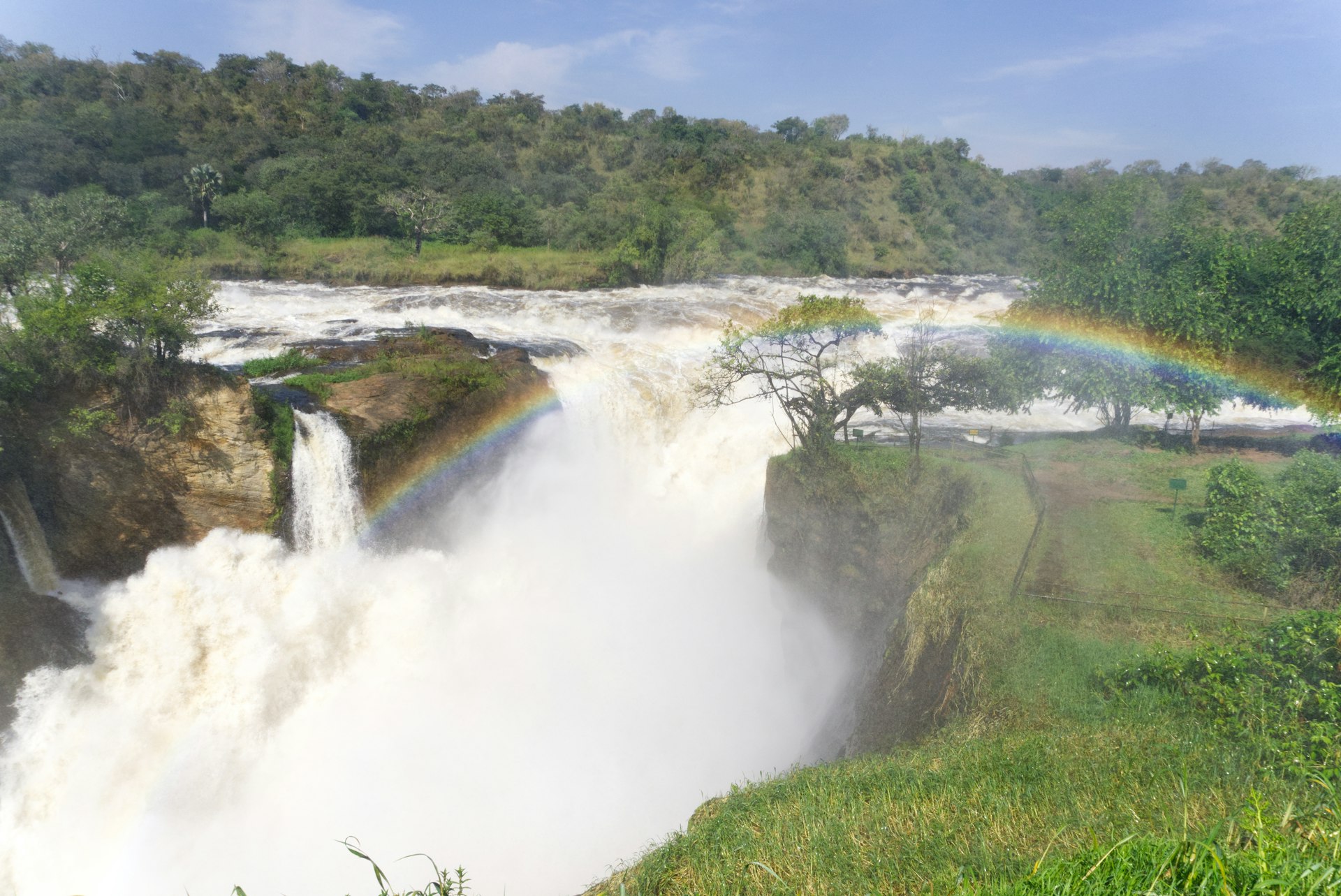
A magnificent view of Murchison Falls during viewing of the top of falls in Murchison Falls National Park
- All eligible travelers MUST apply for a tourist visa online before arrival via the official Uganda Immigration portal: https://visas.immigration.go.ug
- Visa on arrival is no longer available.
- Submit your application, upload required documents, and pay the fee online.
| Type | Validity | Fee (USD) | Details |
|---|---|---|---|
| Single-Entry Tourist Visa | Up to 90 days | $50 | For leisure, family visit |
| Multiple-Entry Visa | 6/12/24 months | $100–200 | For repeated entries |
| East Africa Tourist Visa | 90 days | $100 | Kenya, Rwanda, Uganda (multiple entry) |
| Transit Visa | 7 days | $50 | For stopovers/transit |
- Minimum 6 months passport validity
- Recent passport-size photo (digital upload)
- Travel itinerary and proof of accommodation
- Return/onward ticket (often requested)
- Proof of yellow fever vaccination
- Visa approval letter (print and present on arrival)
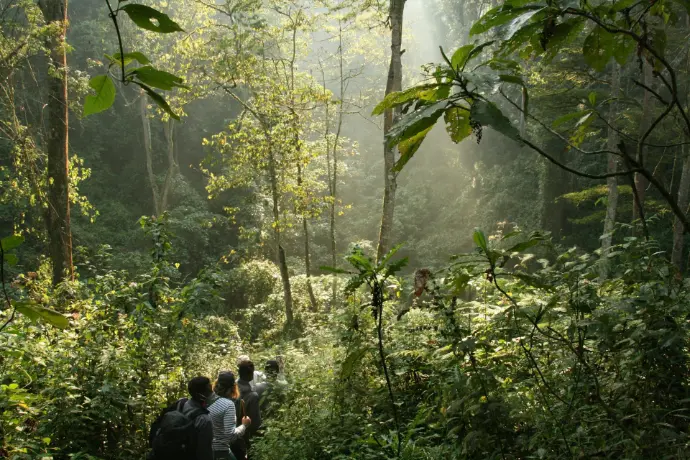
Our tourists during gorilla trekking in Bwindi Impenetrable National Park.
- National Parks and Rural Areas: Ugandan parks such as Bwindi, Queen Elizabeth, and Murchison Falls are considered very safe for guided safaris. Security is regularly maintained by Uganda Wildlife Authority rangers and local police, and incidents are rare.
- Major Cities: Kampala and Entebbe are friendly to tourists, but standard urban precautions apply: keep valuables secure, avoid walking alone at night, be alert in busy areas, and use reputable taxis.
- Border Regions: Exercise particular caution near borders with South Sudan and Democratic Republic of Congo, as sporadic unrest and cross-border crime have been reported. Always follow government and tour operator advisories.
- Petty Crime: Opportunistic theft (pickpocketing, bag snatching) is the most common risk in urban centers and markets. Keep valuables out of sight; use hotel safes; avoid displaying cash.
- Road Safety: Ugandan roads can be challenging, with variable driving standards and potholes. Arrange private or lodge-based transport, avoid night travel outside main cities, and use seatbelts.
- Women and Solo Travelers: Female visitors report feeling safe, but caution is recommended after dark and in unfamiliar neighborhoods. Dress modestly in rural areas.
- LGBTQ+ Travelers: Uganda’s laws are extremely strict regarding same-sex relations, and open LGBTQ+ expression is not accepted in most settings. Discretion is advised; consult current consular advice.
- Terrorism & Political Demonstrations: Incidents are rare but possible. Avoid protests, heed local and international alerts, and register with your embassy if required.
- Always follow park regulations, keep a safe distance from wildlife, and listen to your armed ranger and guide.
- Gorilla and chimp tracking involve strict rules for health and safety (keep a 7-meter distance, show no signs of illness, no flash photography).
- Do not hike or drive in parks without a registered guide.
- Keep up-to-date with vaccinations and bring antimalarial medication. Only drink bottled or treated water.
- Purchase comprehensive travel insurance including medical evacuation.
- Carry emergency contacts and register your trip with your home embassy if required.
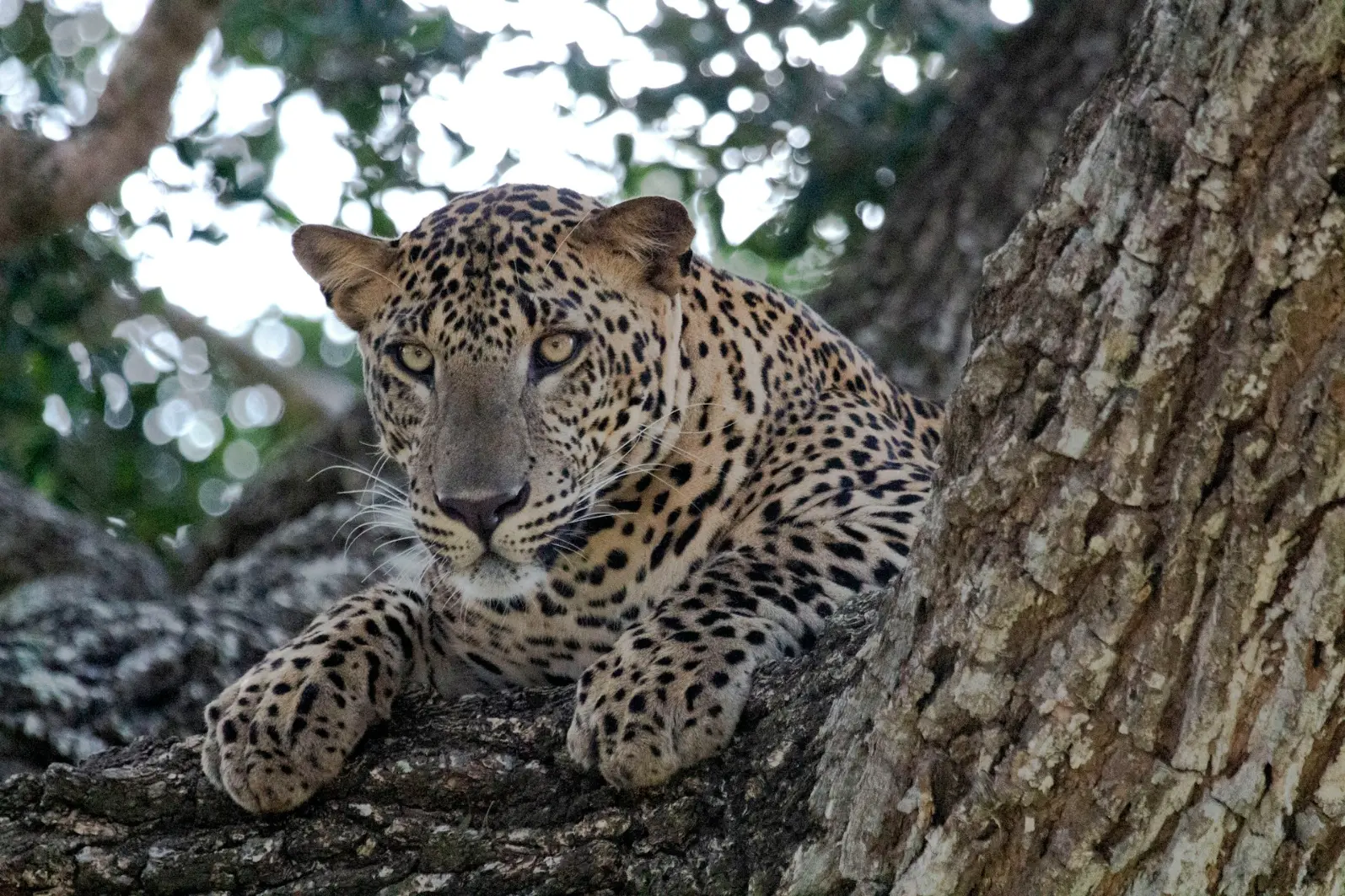
A leopard resting on a tree branch at Murchison Falls National Park
- Primates: Uganda is the global epicenter for mountain gorilla trekking (Bwindi, Mgahinga), with over half the world’s population. Chimpanzee tracking is best done in Kibale, but chimps inhabit Kyambura Gorge, Budongo, and Kalinzu. Golden monkeys, black-and-white colobus, and L’Hoest monkeys are commonly spotted.
- Big Five: Murchison Falls, Queen Elizabeth, and Kidepo Valley National Parks are home to four of the Big Five (lion, leopard, elephant, buffalo); rhinos can be tracked at Ziwa Rhino Sanctuary.
- Unique Wildlife Experiences:
- Tree-climbing lions in Ishasha (Queen Elizabeth NP), a rare phenomenon.
- Shoebill stork, a prehistoric-looking bird, found in Mabamba Swamp and Murchison Falls.
- Boat safaris on the Nile (Murchison Falls) and Kazinga Channel (Queen Elizabeth) yield close-up views of hippos, crocodiles, and water birds.
- Giraffes, zebras, cheetahs, antelopes, and hyenas are abundant in specific parks.
- Birding: Uganda boasts more species per square kilometer than any country in Africa, making it a “birder’s paradise.”
- Savannah Game: Buffalo, Uganda kob, oribi, warthog, waterbuck, topi, and impala abound in parks like Lake Mburo and Queen Elizabeth.
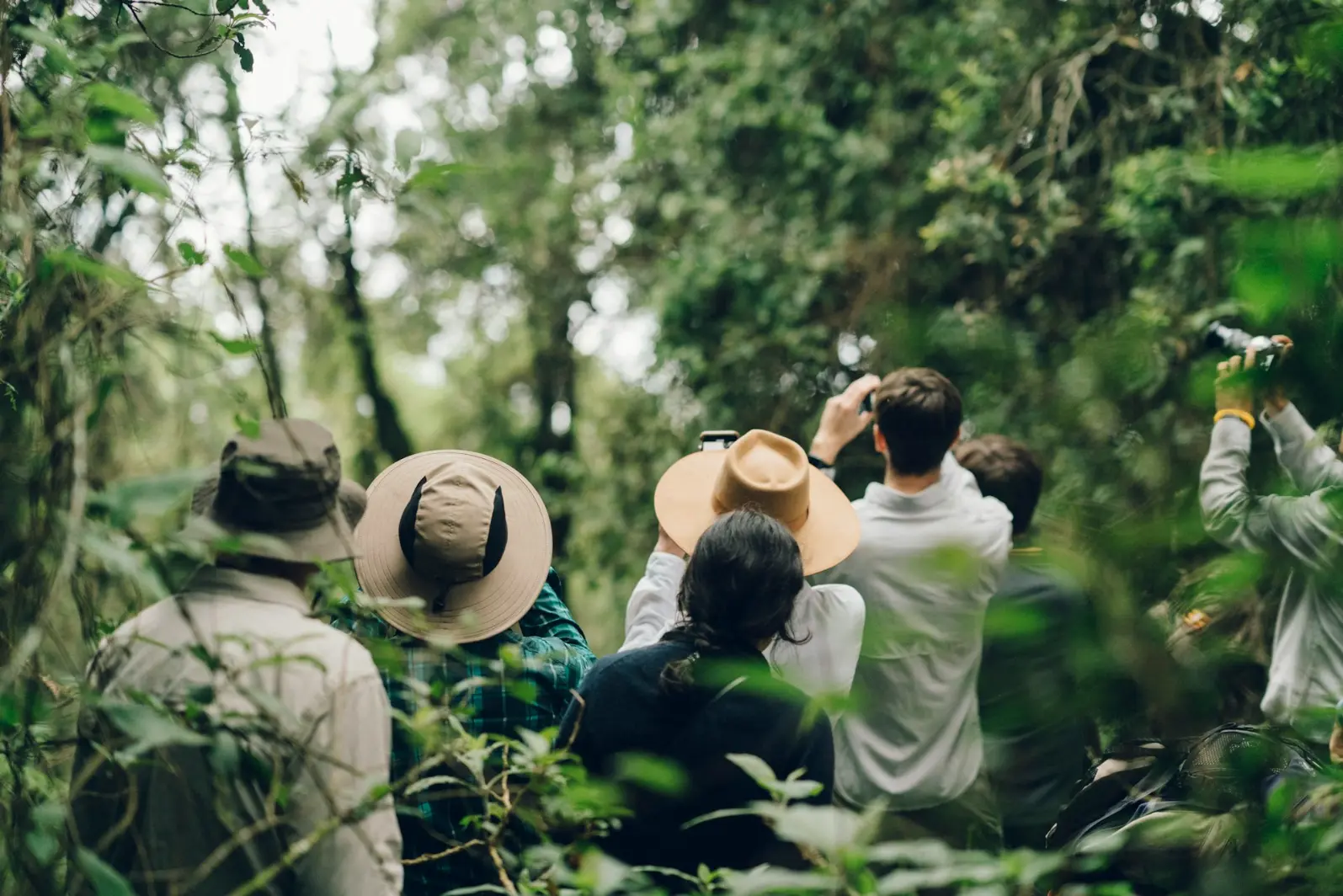
Our group tourists spotting birds in Kibale Forest National Park in Uganda
- Clothing: Lightweight, breathable, neutral-colored clothing (avoid white, black, neon). Quick-dry fabrics recommended. Long sleeves and pants for bush walks and evenings.
- Footwear: Sturdy, waterproof hiking boots for trekking; comfortable walking shoes/sandals for evenings.
- Rain Gear: Waterproof jacket or poncho, a year-round must due to unpredictable showers.
- Accessories: Wide-brimmed sun hat, sunglasses, high-SPF sunscreen, reusable water bottle.
- Medical: First aid kit (incl. plasters, antiseptic, rehydration salts), personal medications, malaria prophylaxis, insect repellent (DEET-based), hand sanitizer, and oral rehydration powder.
- Tech/Optics: Camera with zoom lens, spare batteries, power bank, binoculars.
- Documents: Passport, printed e-visa/approval, yellow fever certificate, travel insurance, vaccination records (copies, keep separate from originals).
- Daypack: For water, camera, rain gear, snacks, and documents on activities like trekking.
- Toiletries: Biodegradable soap/shampoo, toothbrush/paste, wipes, tissue, feminine hygiene products.
- Others: Headlamp/torch (power outages possible), spare SIM card, plug adapter (UK-style G).
- Gloves (garden gloves protect hands from stinging nettles)
- Gaiters/long socks (to tuck in trousers; protection against ants and bugs)
- Warm layers (temperature drops at altitude)
- Small, waterproof backpack
- Walking stick (often provided/available at park HQ)
- Snacks and minimum 2L water
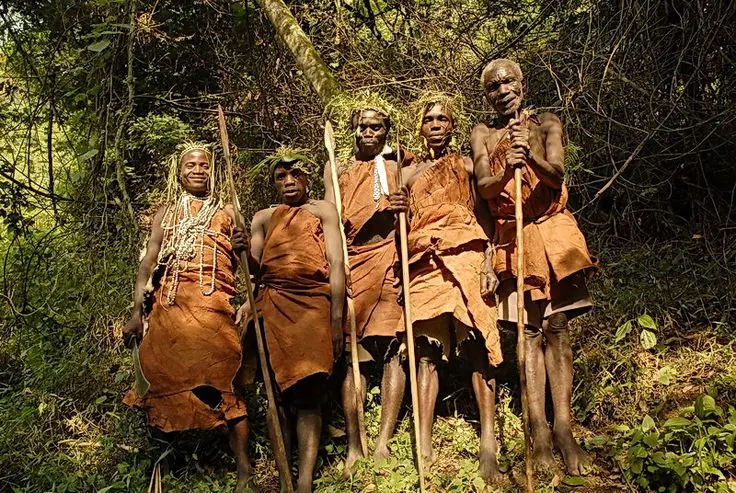
A group of Batwa people in Kisoro - Bwindi Impenetrable National Park
- Kampala: Uganda’s lively capital is a hub for history, religious sites (Uganda Martyrs Shrine, Rubaga Cathedral), museums (Uganda Museum), bustling markets (Nakasero), craft centers, and modern nightlife.
- Buganda Kingdom/Kasubi Tombs: Explore the royal heritage, palaces, and Buganda’s spiritual traditions, a UNESCO World Heritage Site.
- Batwa Experience: Engage with the Batwa "forest people" near Bwindi or Mgahinga; discover hunter-gatherer traditions through forest walks, demonstrations, music, and storytelling. This supports community preservation and sustainable tourism.
- Karamojong Manyatta Visits (Karamoja region): Encounter nomadic pastoralists, join cultural dances and learn about ancient cattle herding customs.
- Bigodi Wetland Sanctuary (near Kibale): Community-led projects offer guided walks, birdwatching, primate viewing, and traditional meals.
- Coffee Tours (Mount Elgon/Sipi Falls region): Participate in coffee farming, roasting, and tasting; connect with local farmers and agricultural traditions.
- Ndere Cultural Centre (Kampala): Watch live performances of music and dance from Uganda’s varied ethnic groups.
- Craft Markets: Shop for handwoven baskets, beaded jewelry, bark cloth, and wood carvings, supporting local artisans.
- Local Cuisine Tasting: Sample iconic dishes such as luwombo (stewed meat/groundnut sauce in banana leaves), rolex (egg/chapati street food), matoke, and eshabwe (ghee sauce). Food tours and cooking classes abound.
- Festivals: If visiting in August/September, time your trip with festivals like World Gorilla Day or the Nyege Nyege Festival in Jinja, celebrations of music, conservation, and Ugandan culture.
- Community Projects: Participate in or visit community tourism initiatives supporting education, healthcare, and sustainable development.
